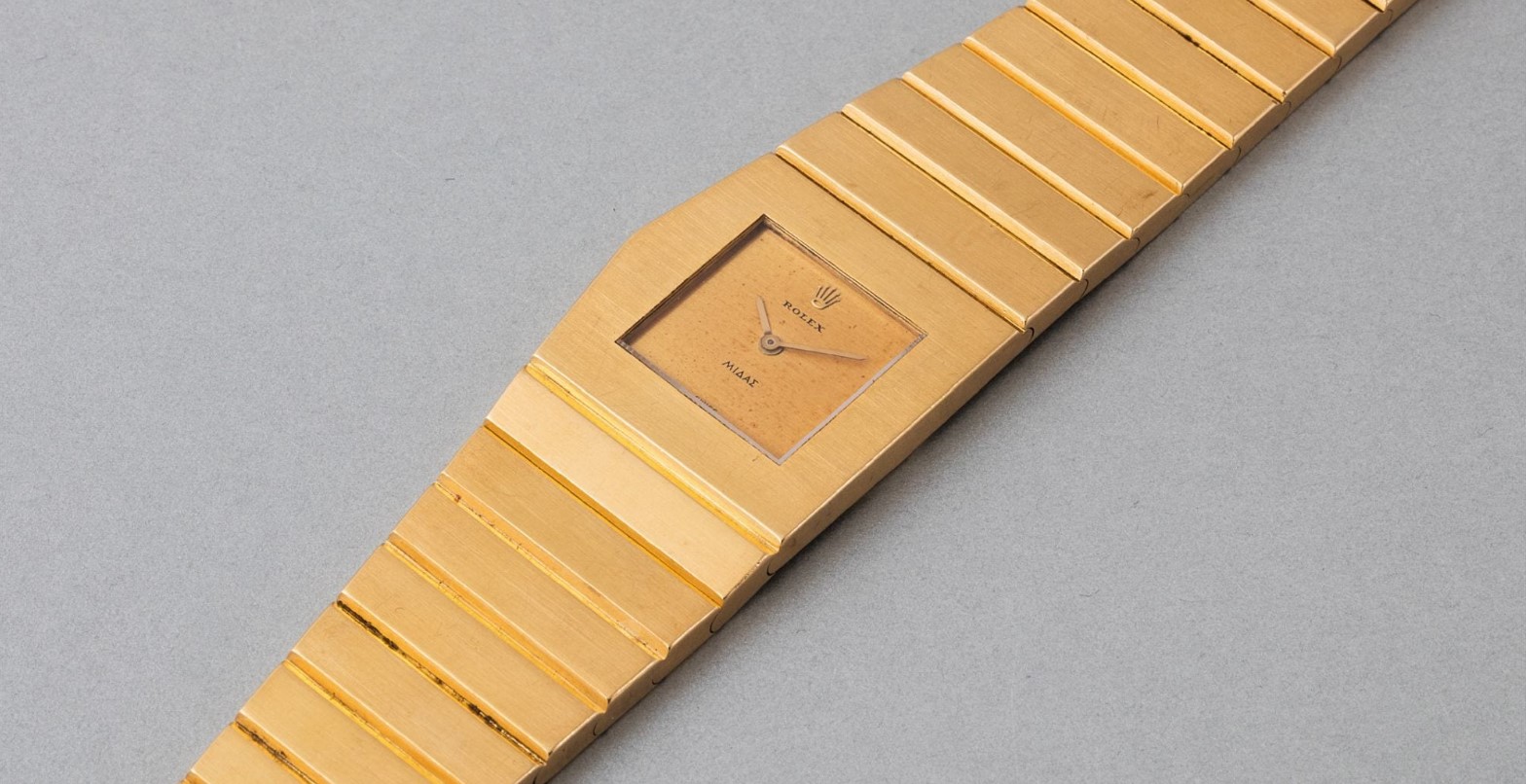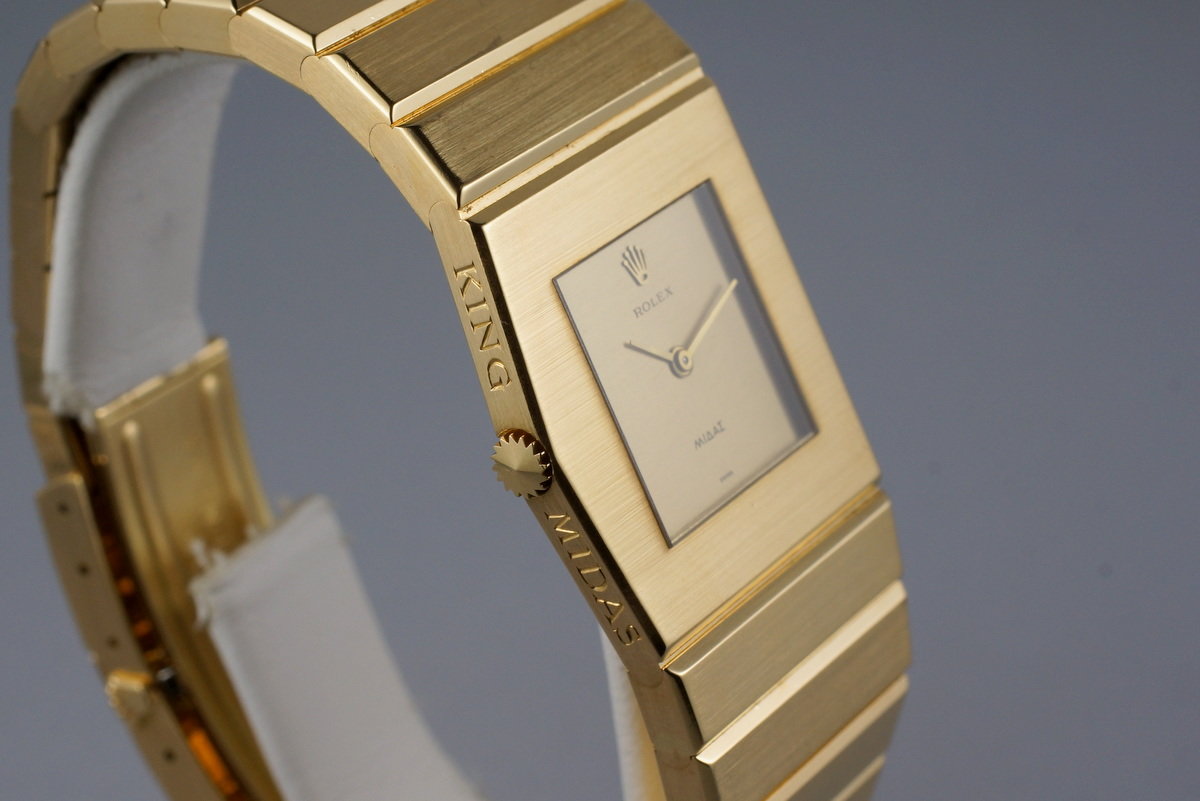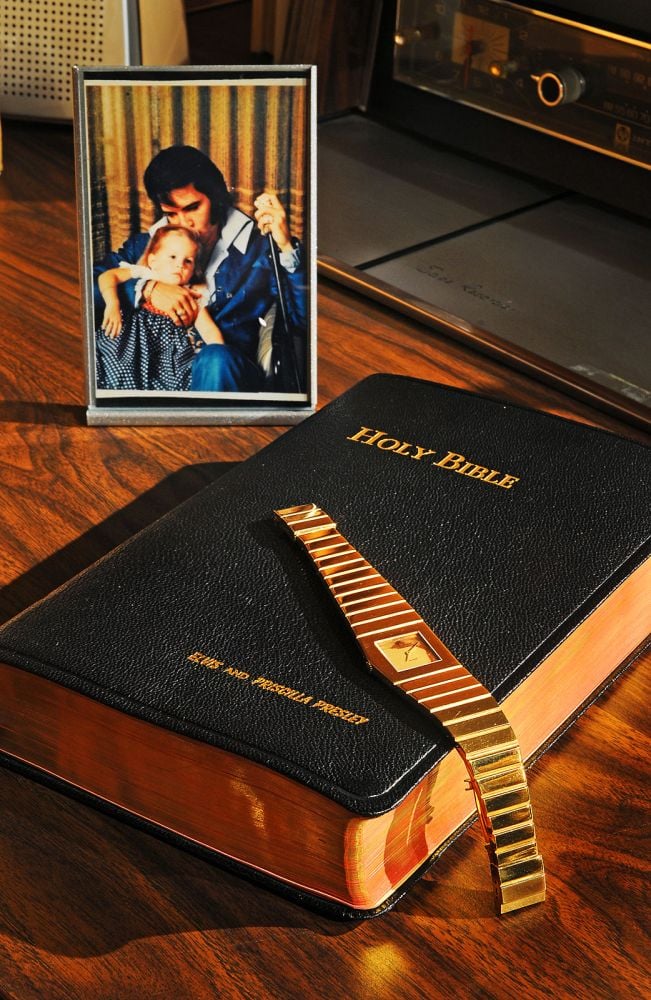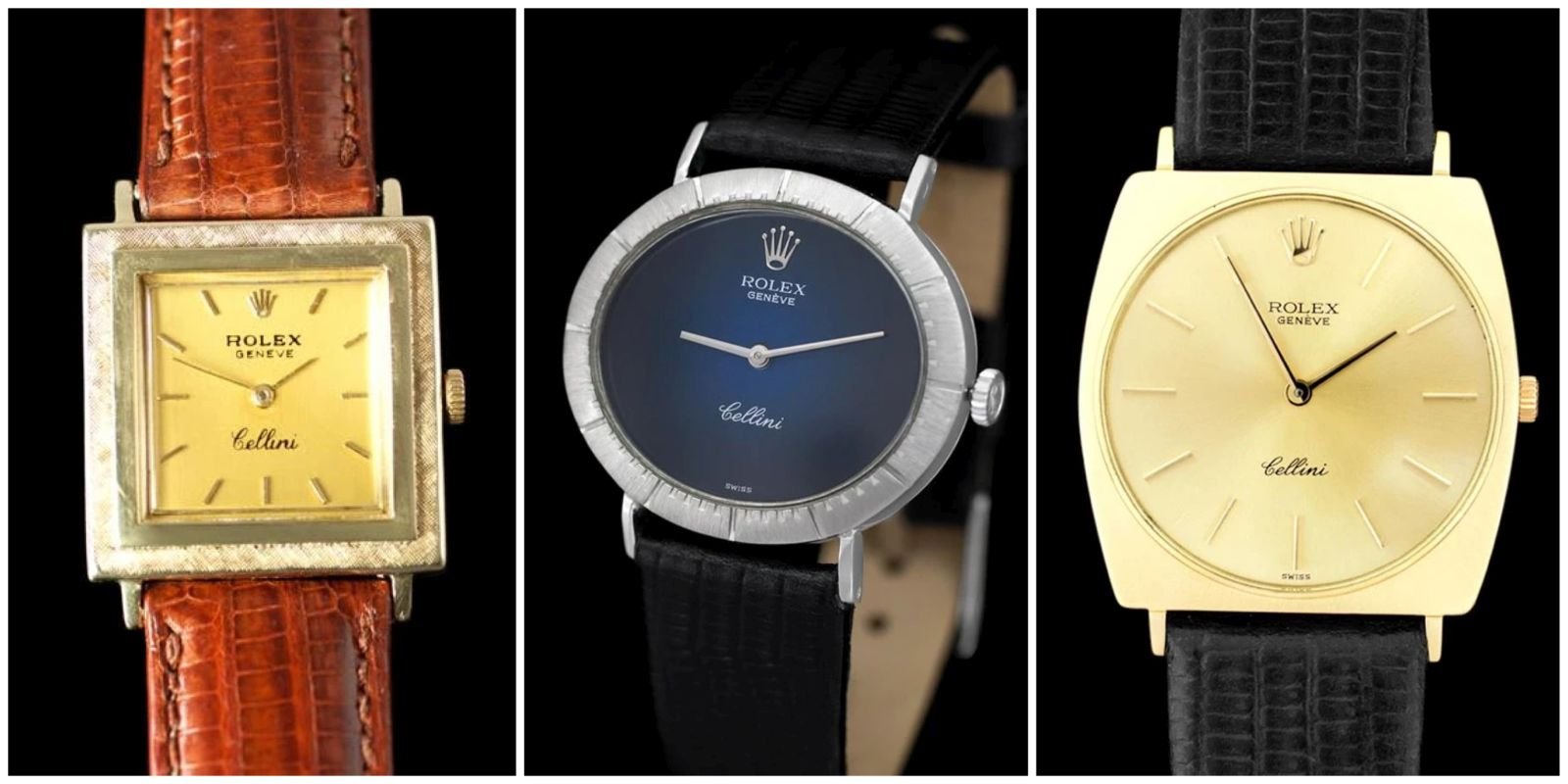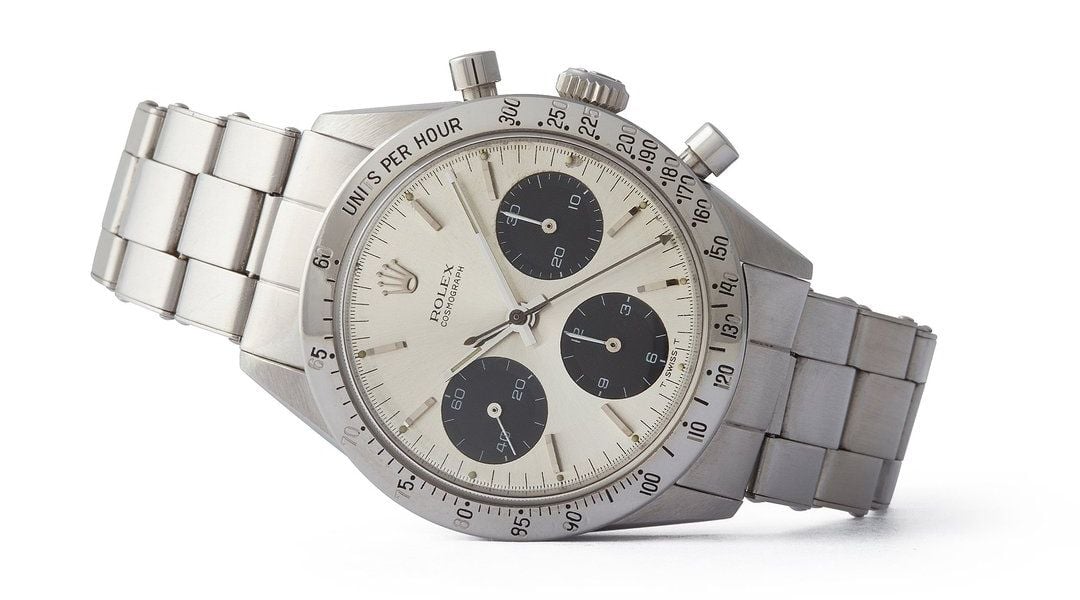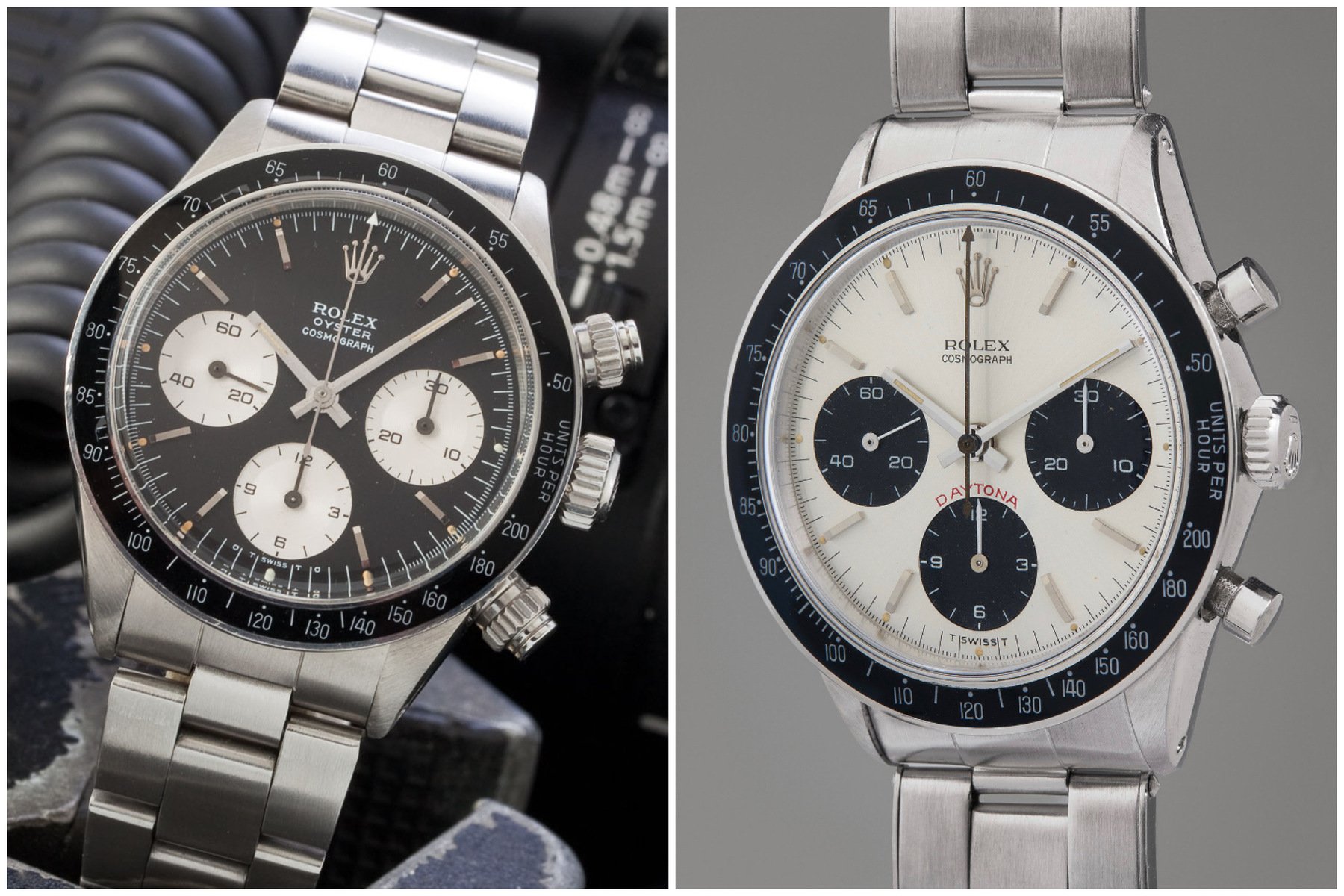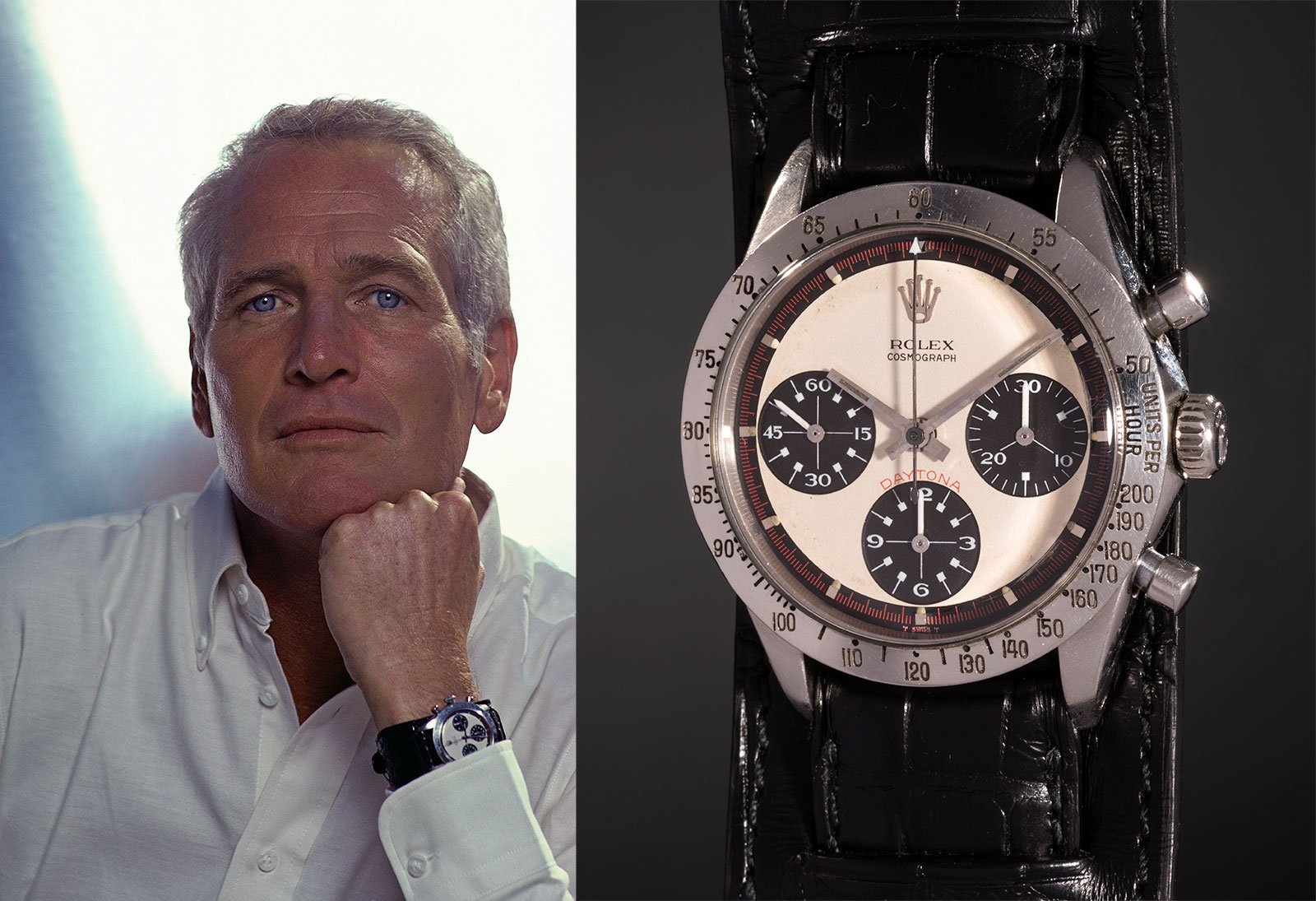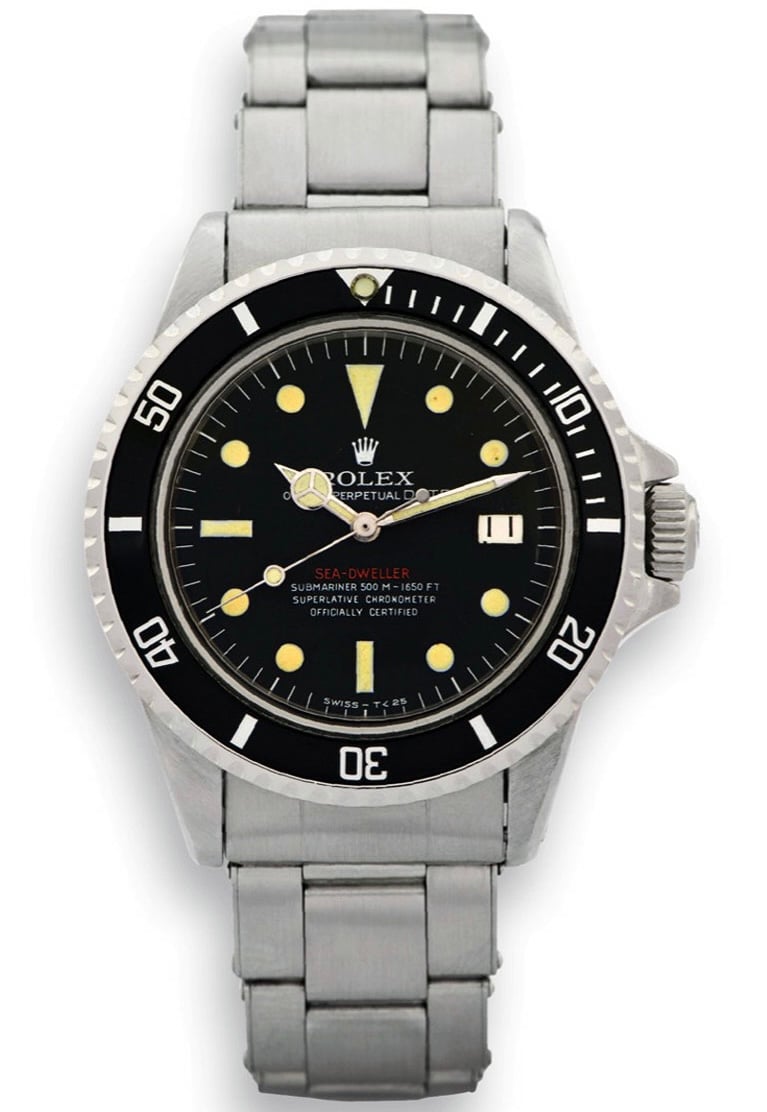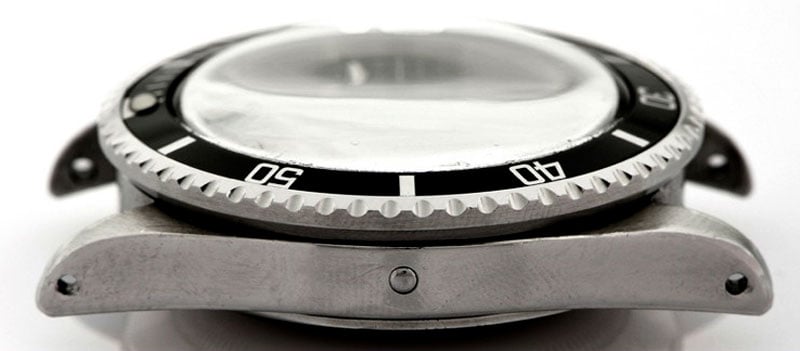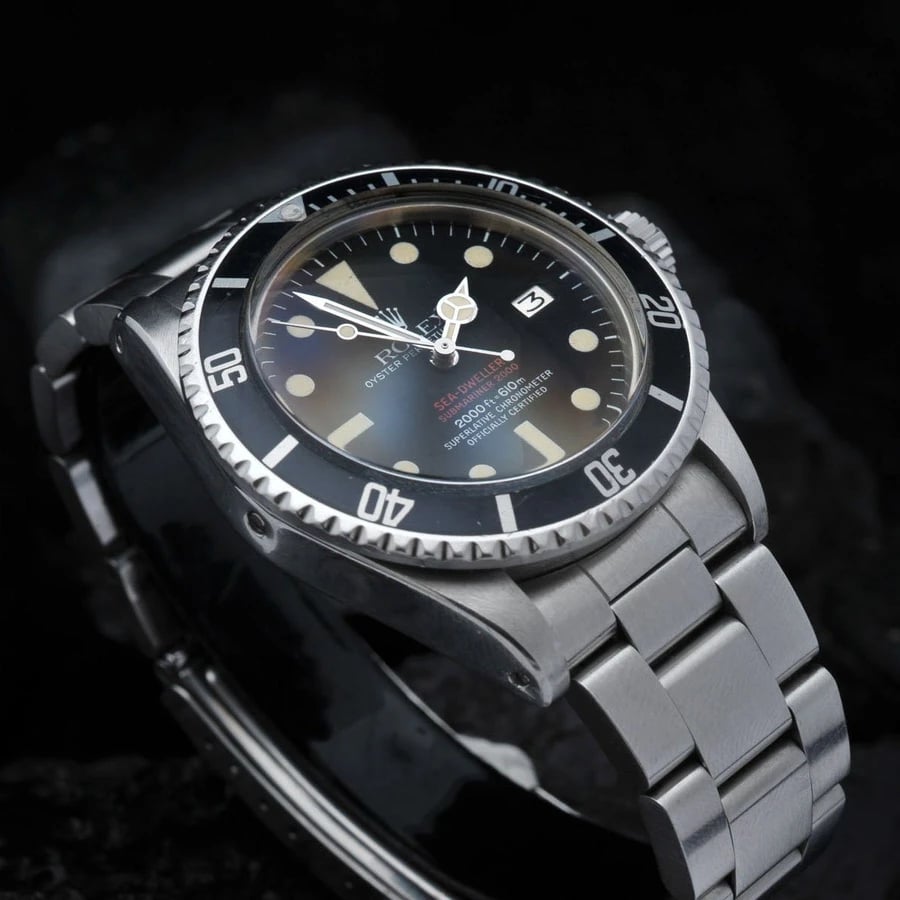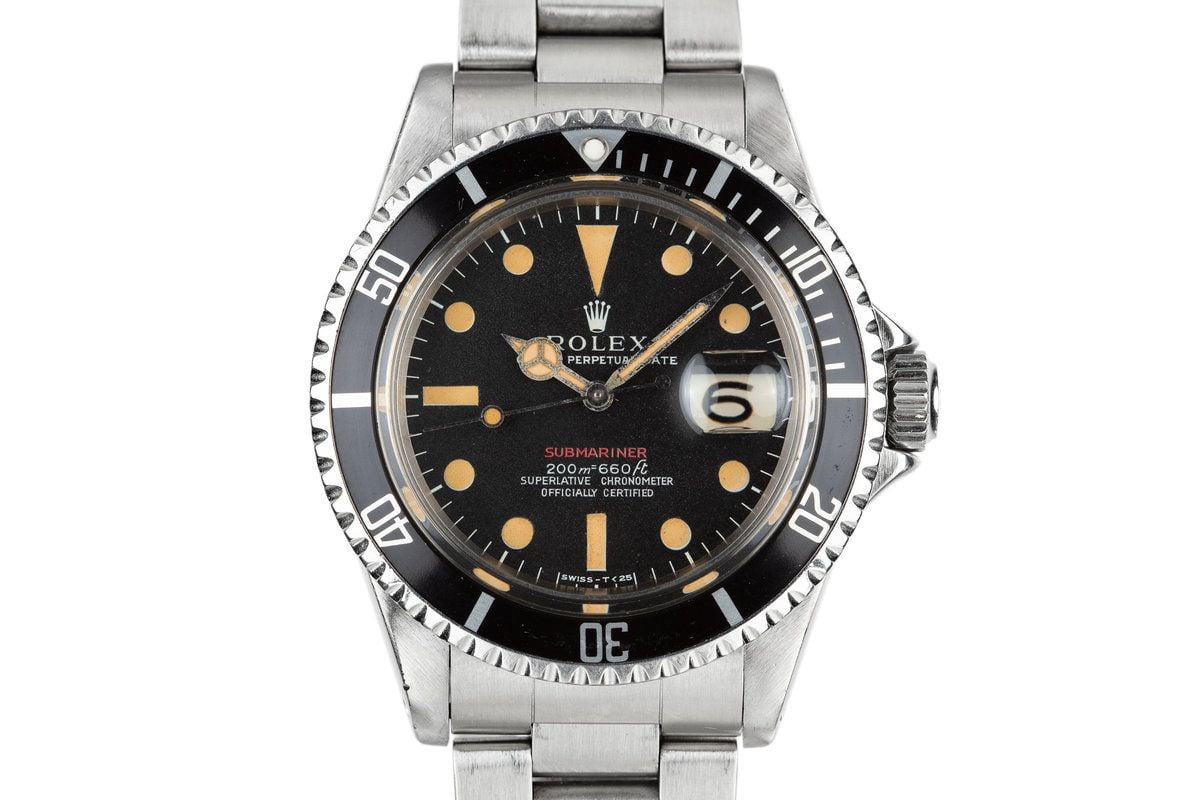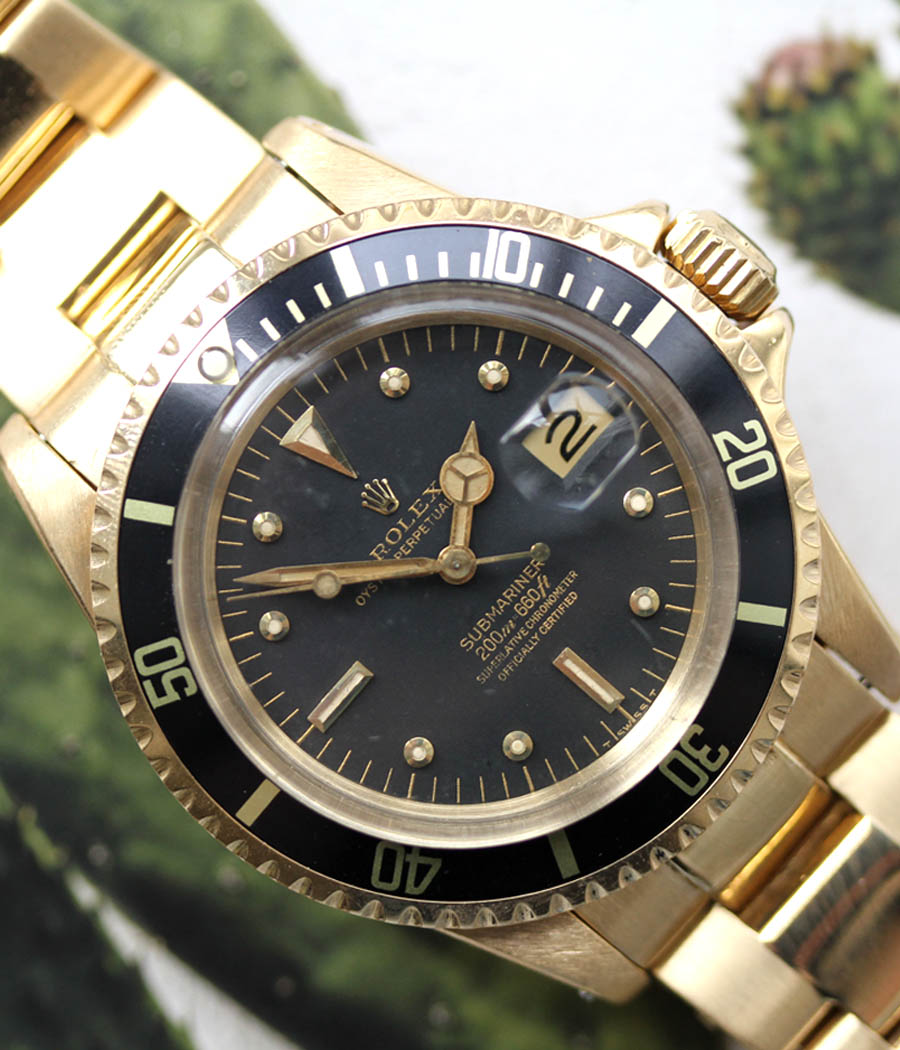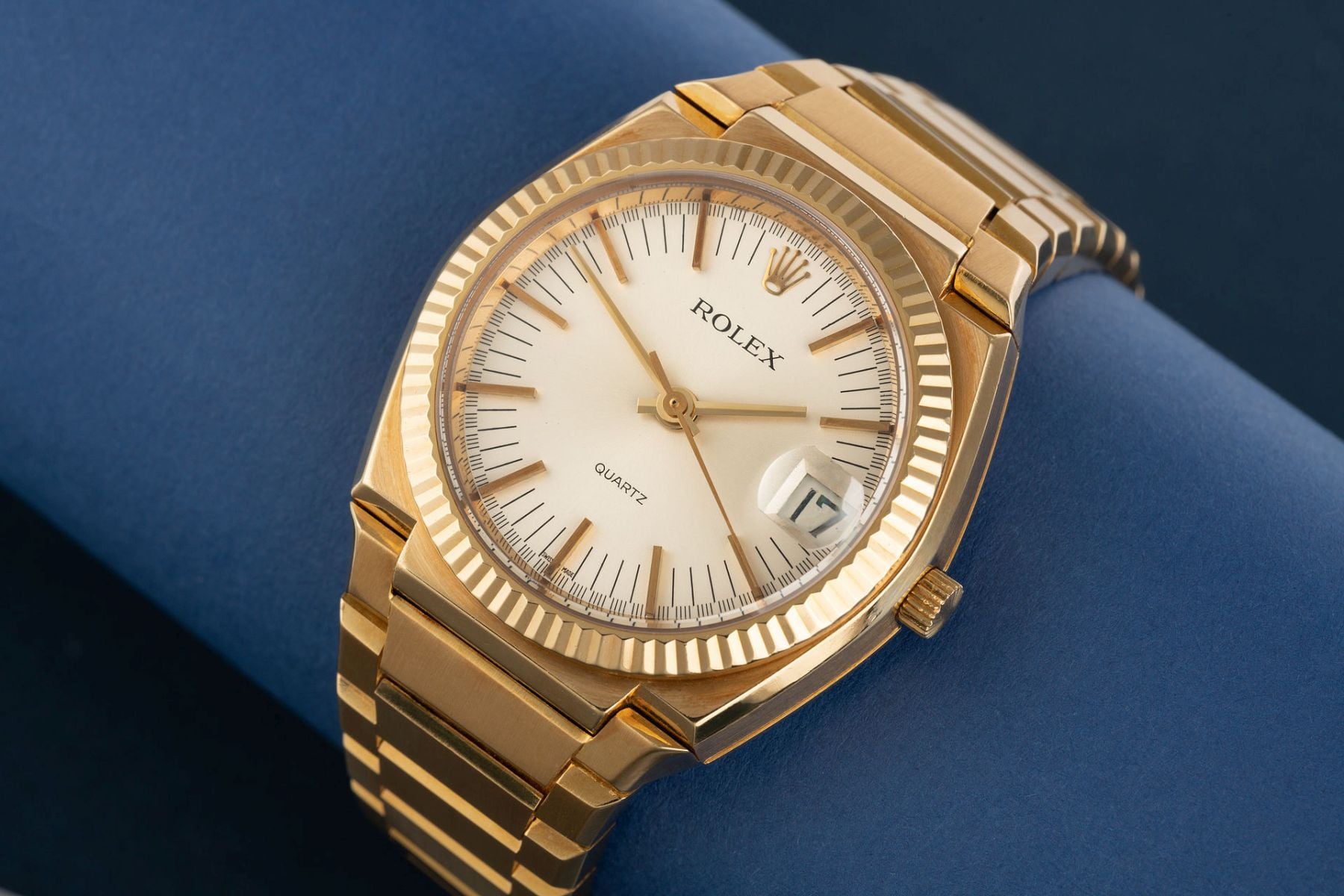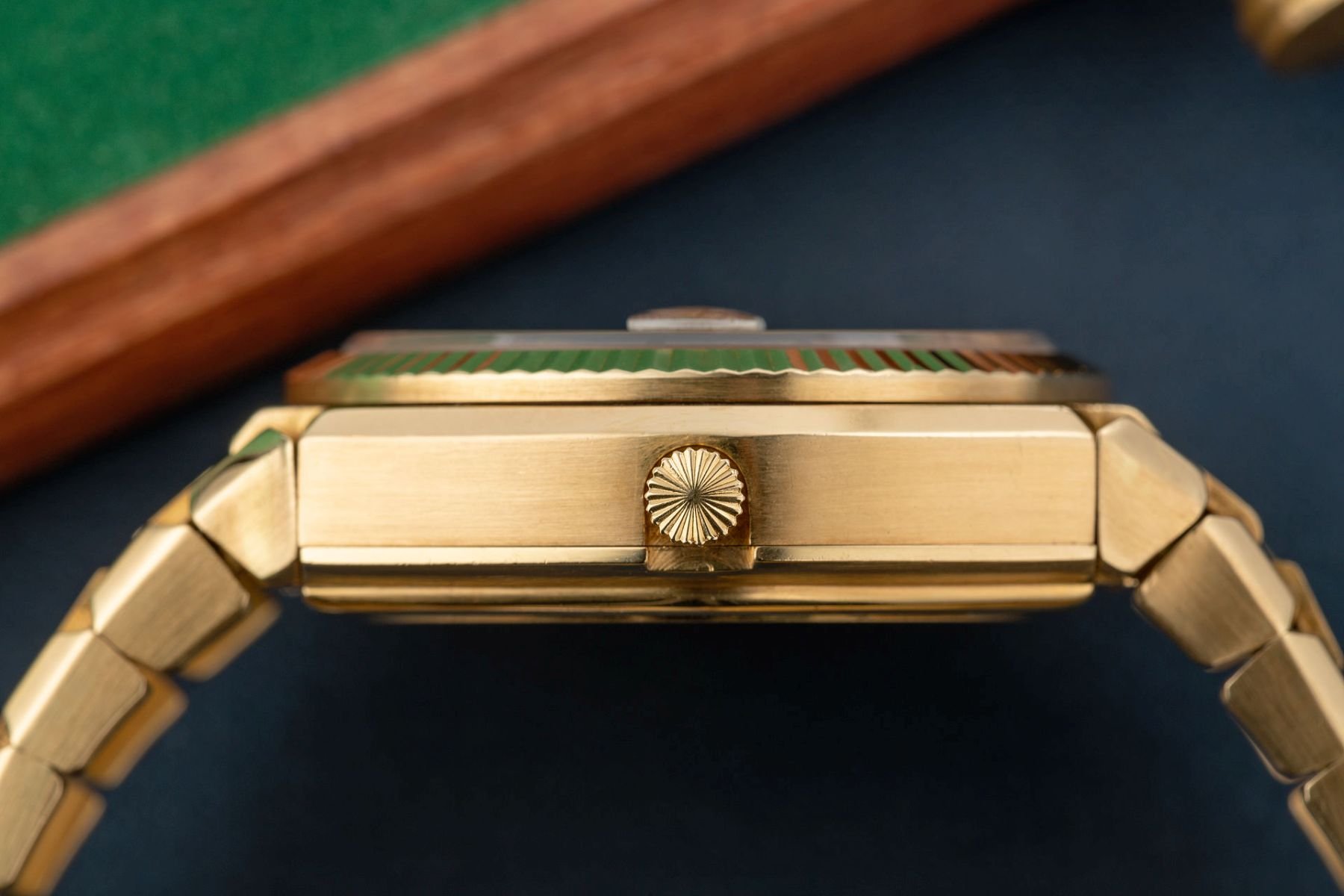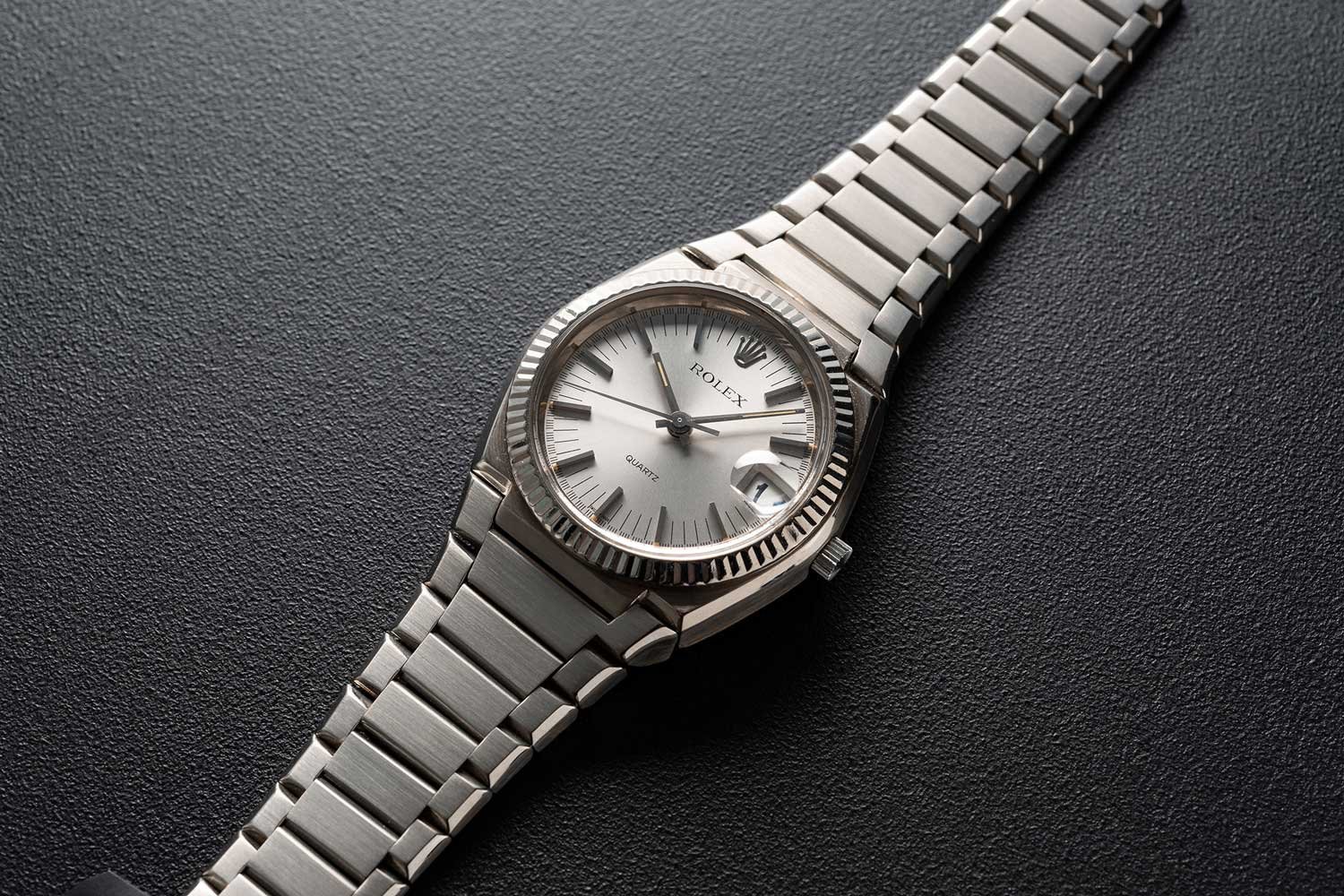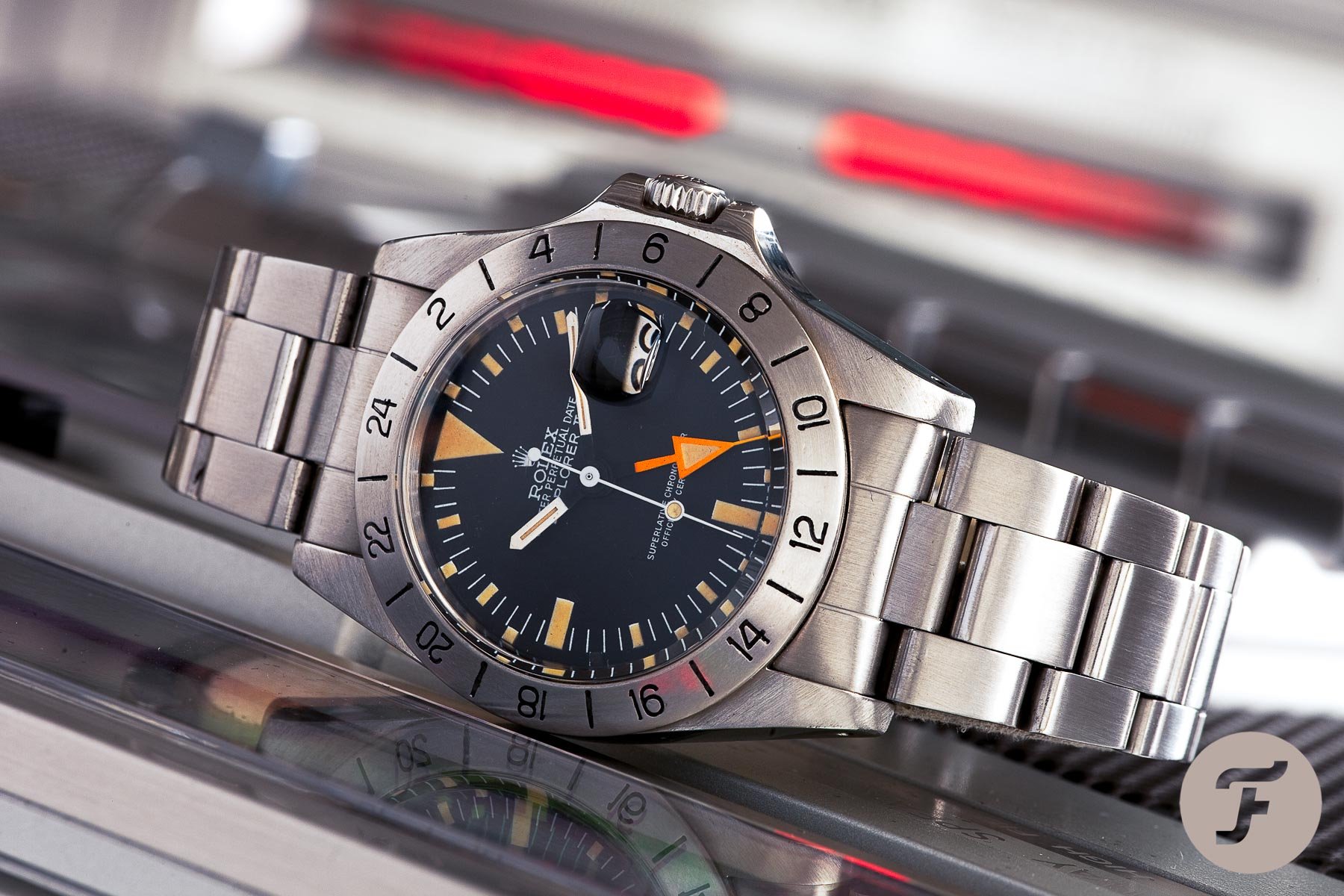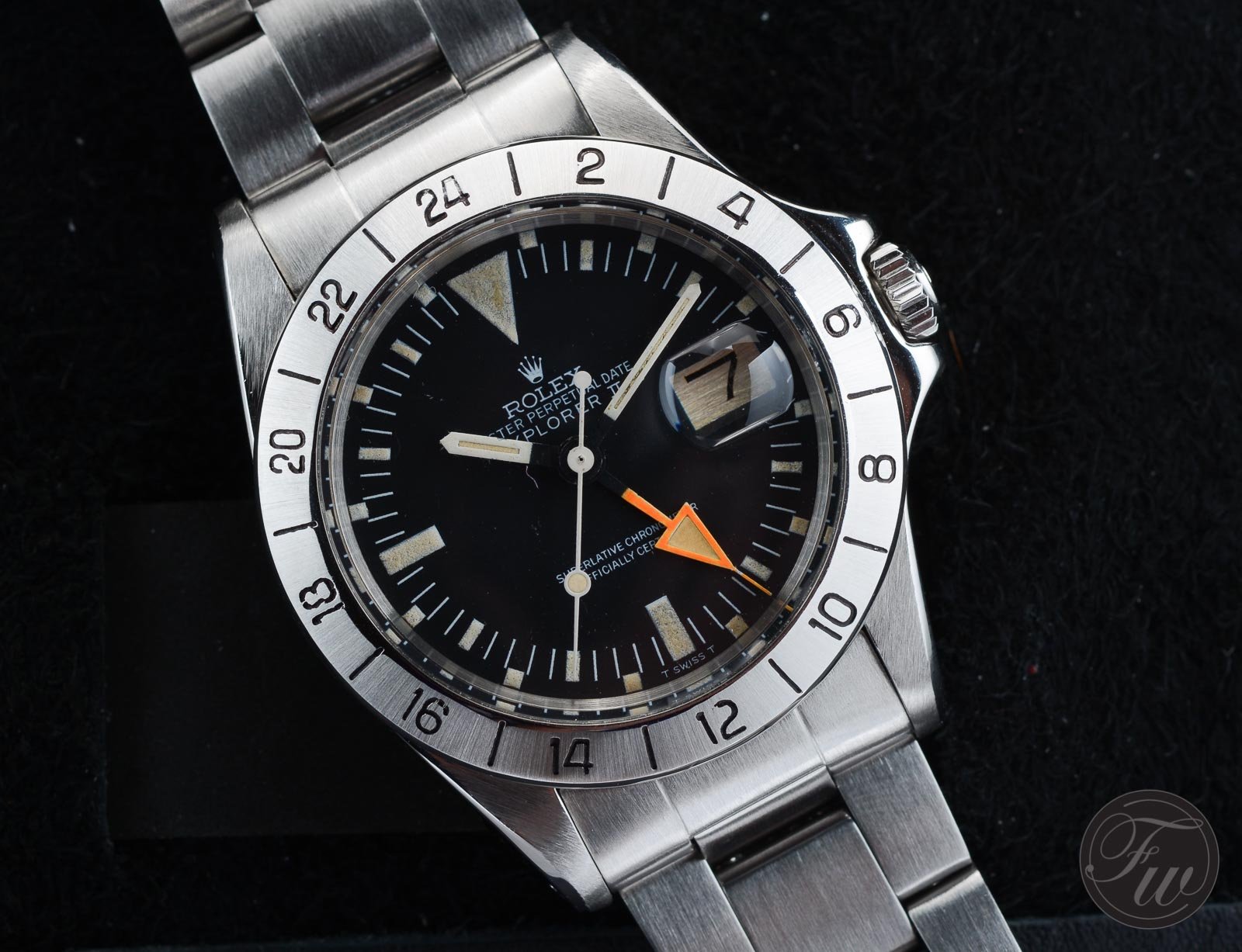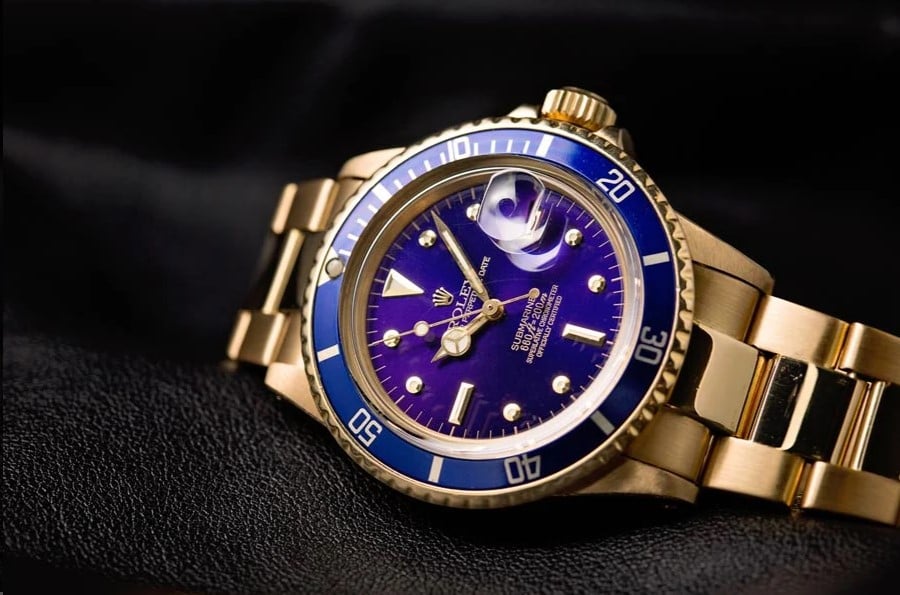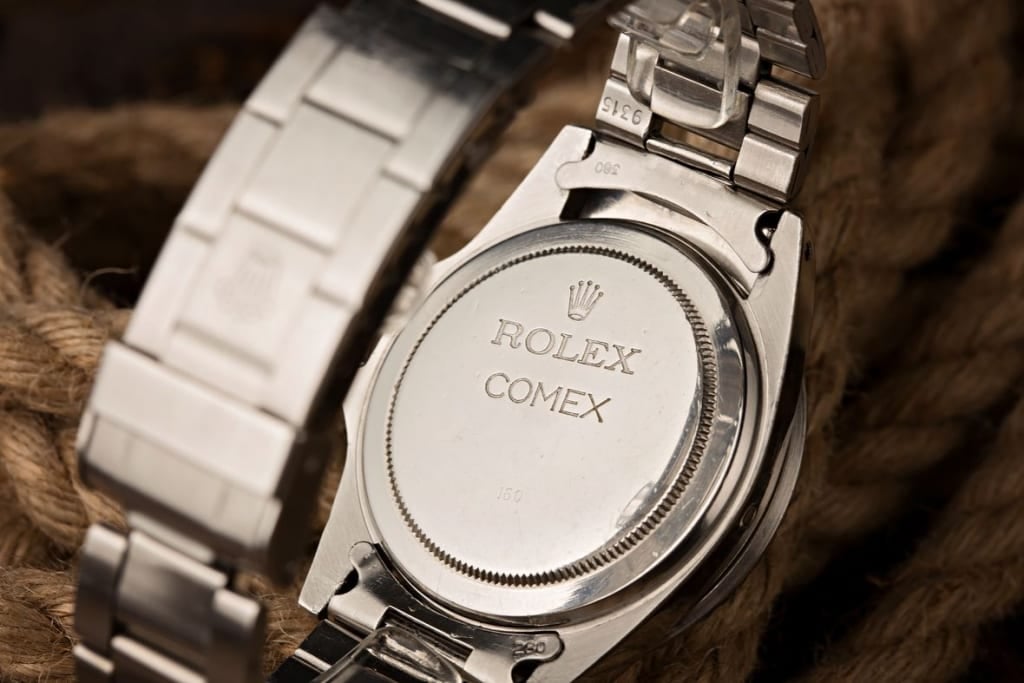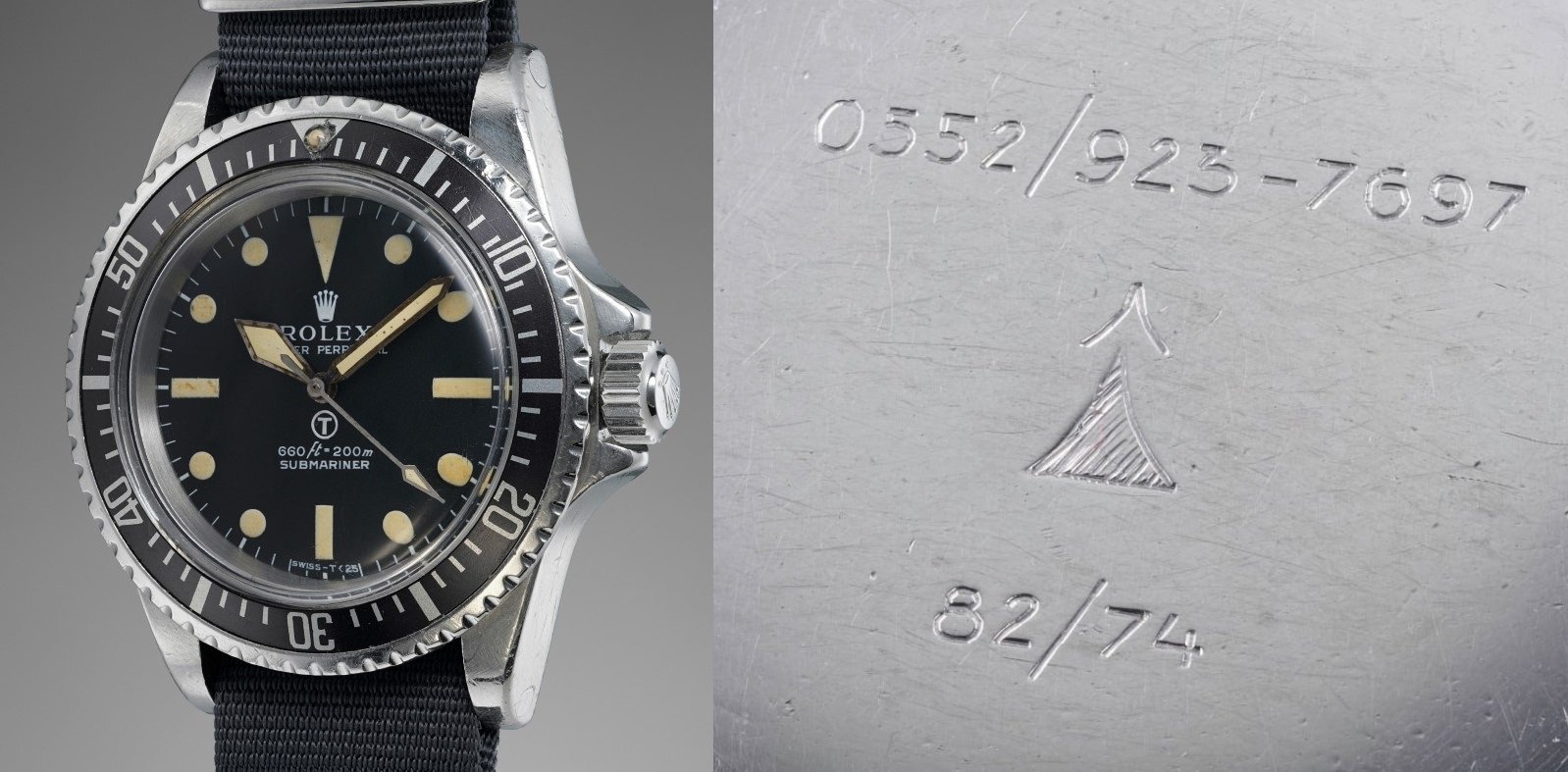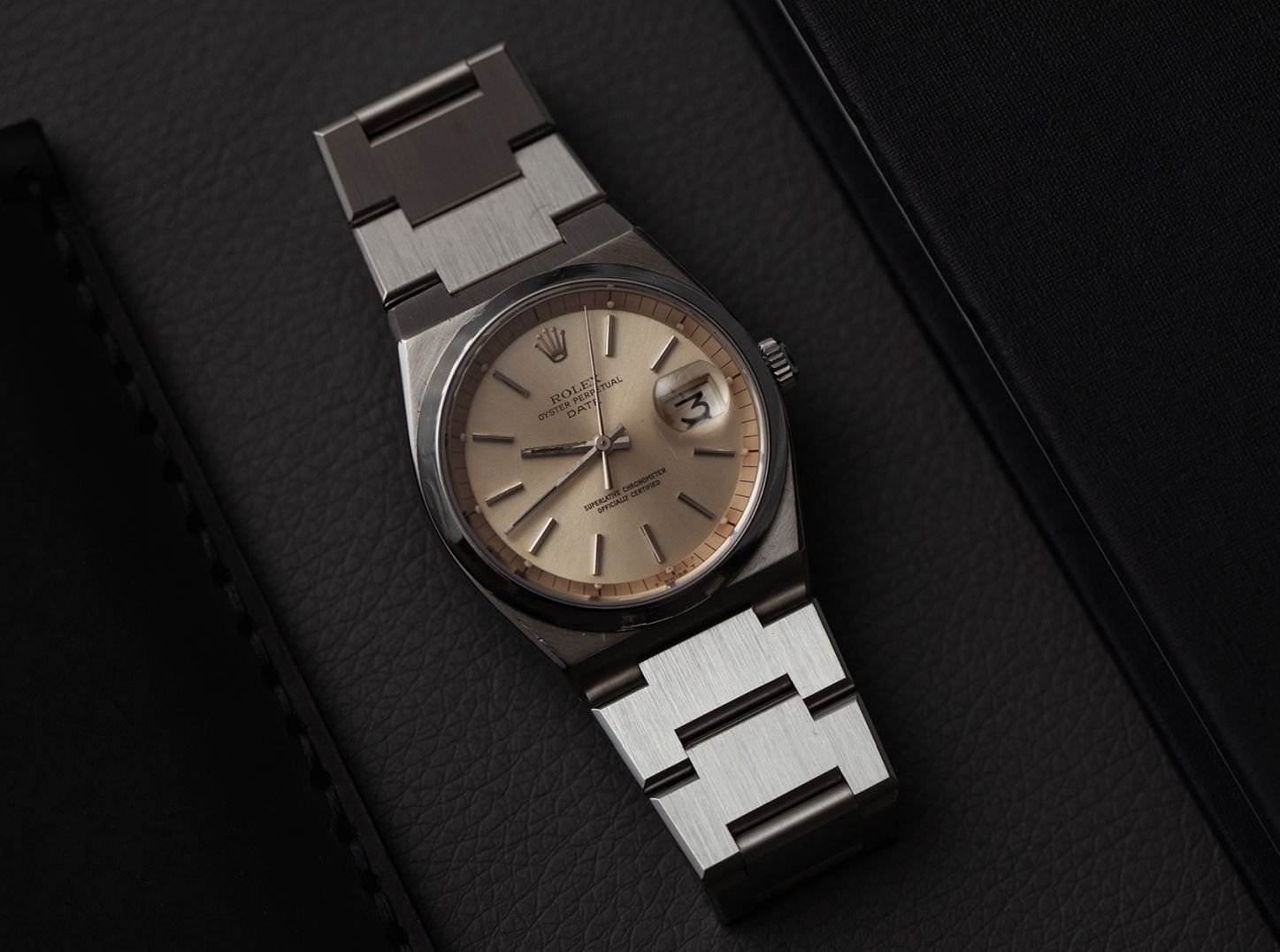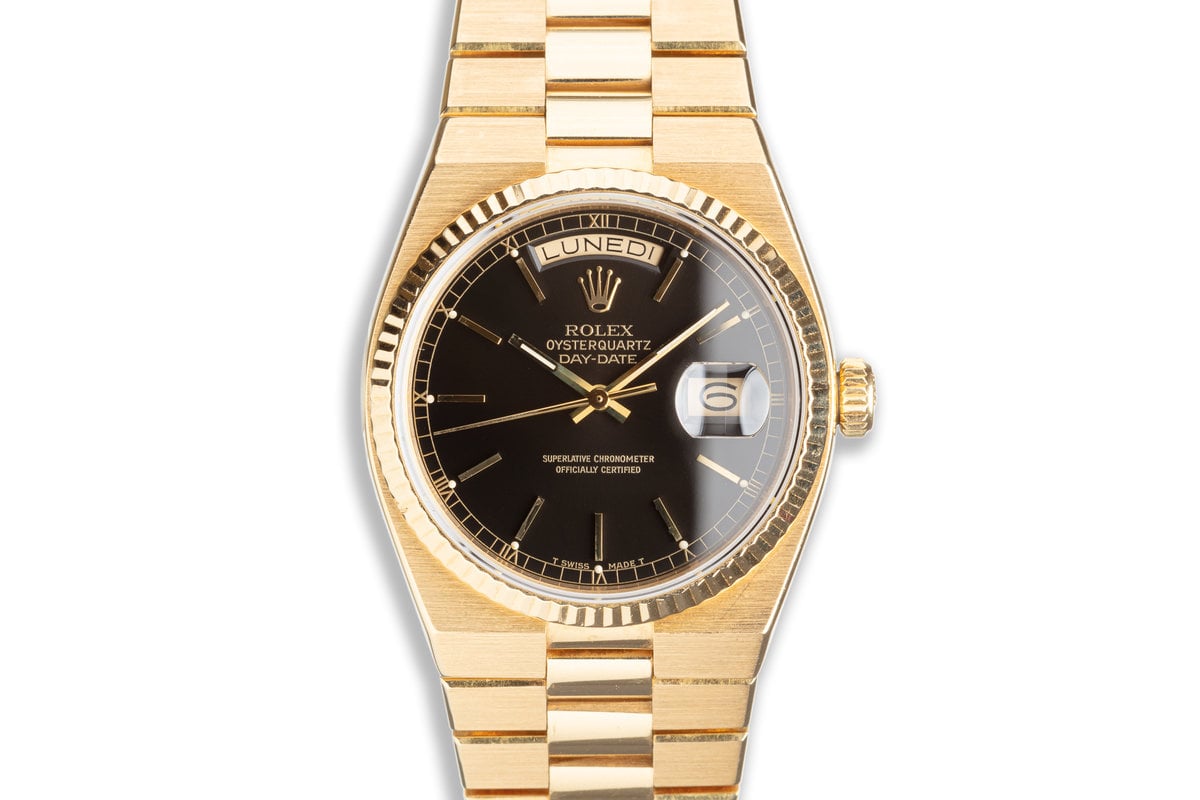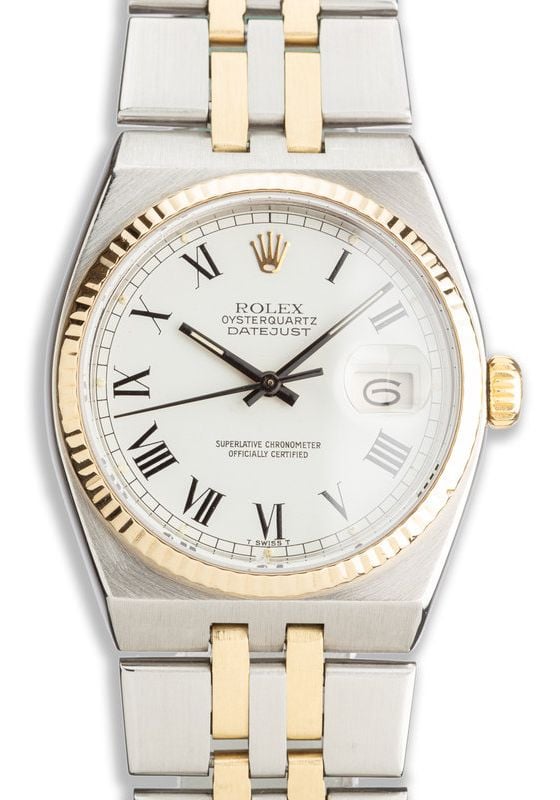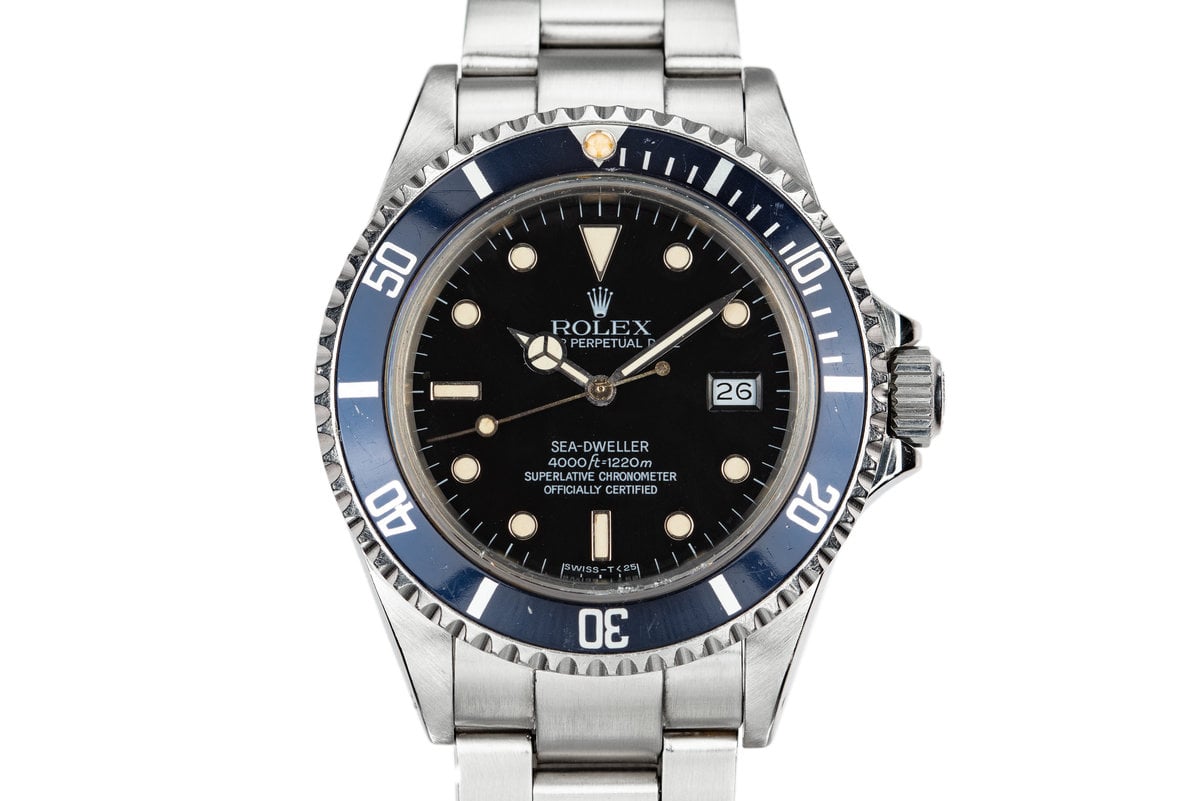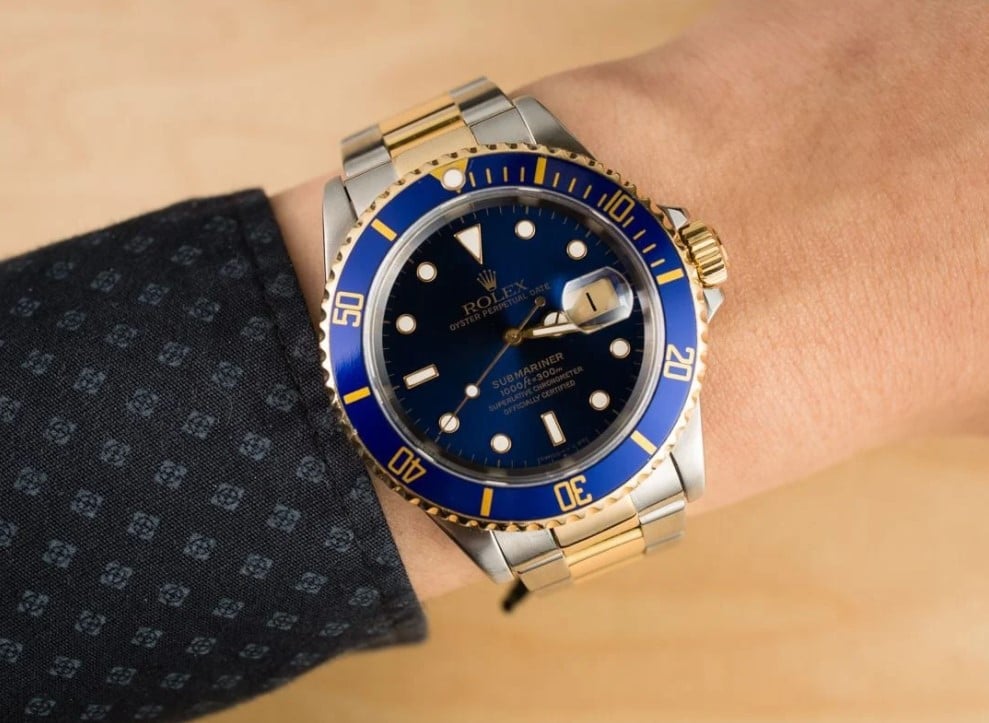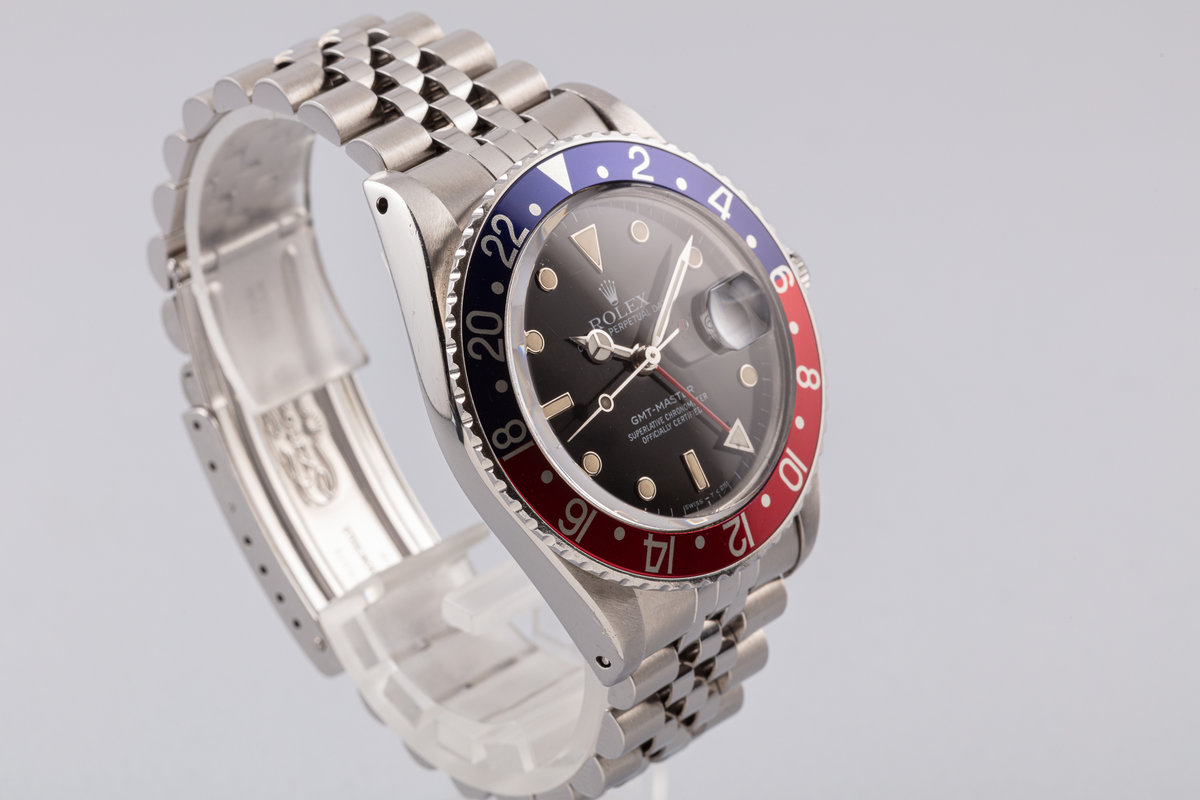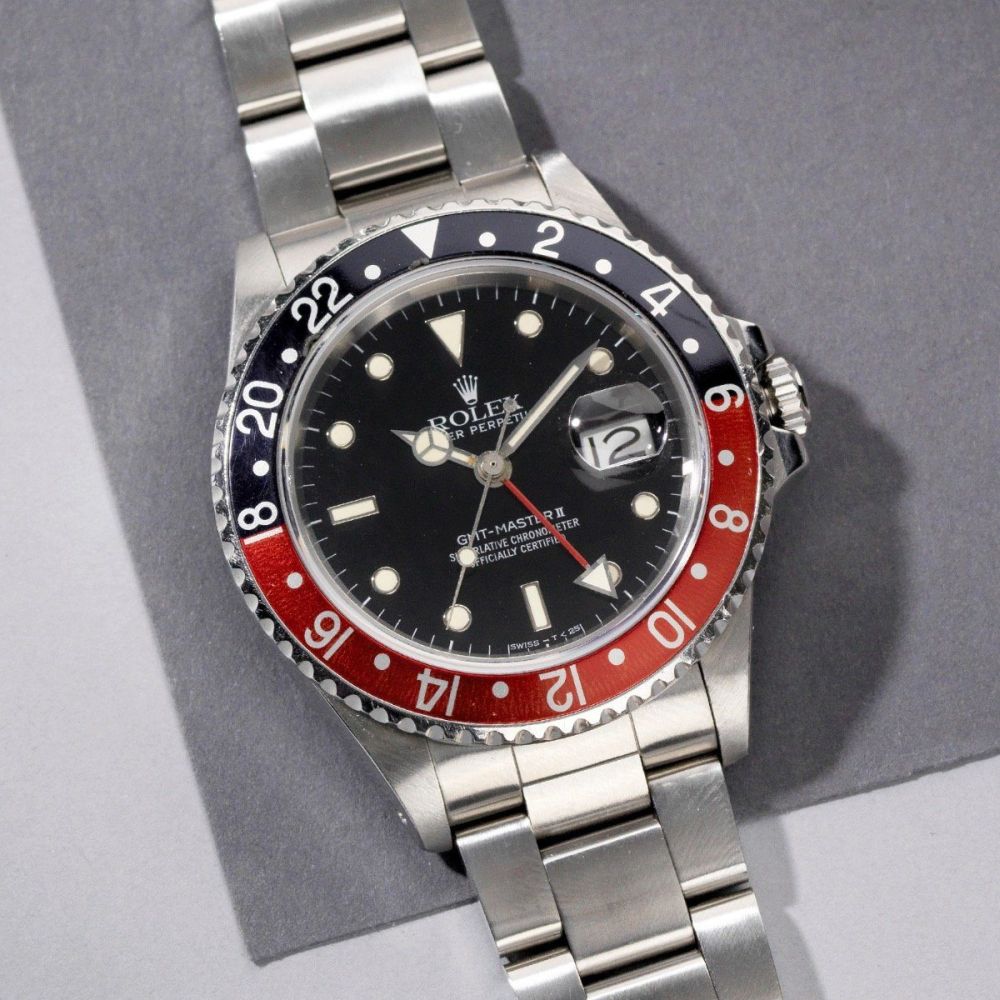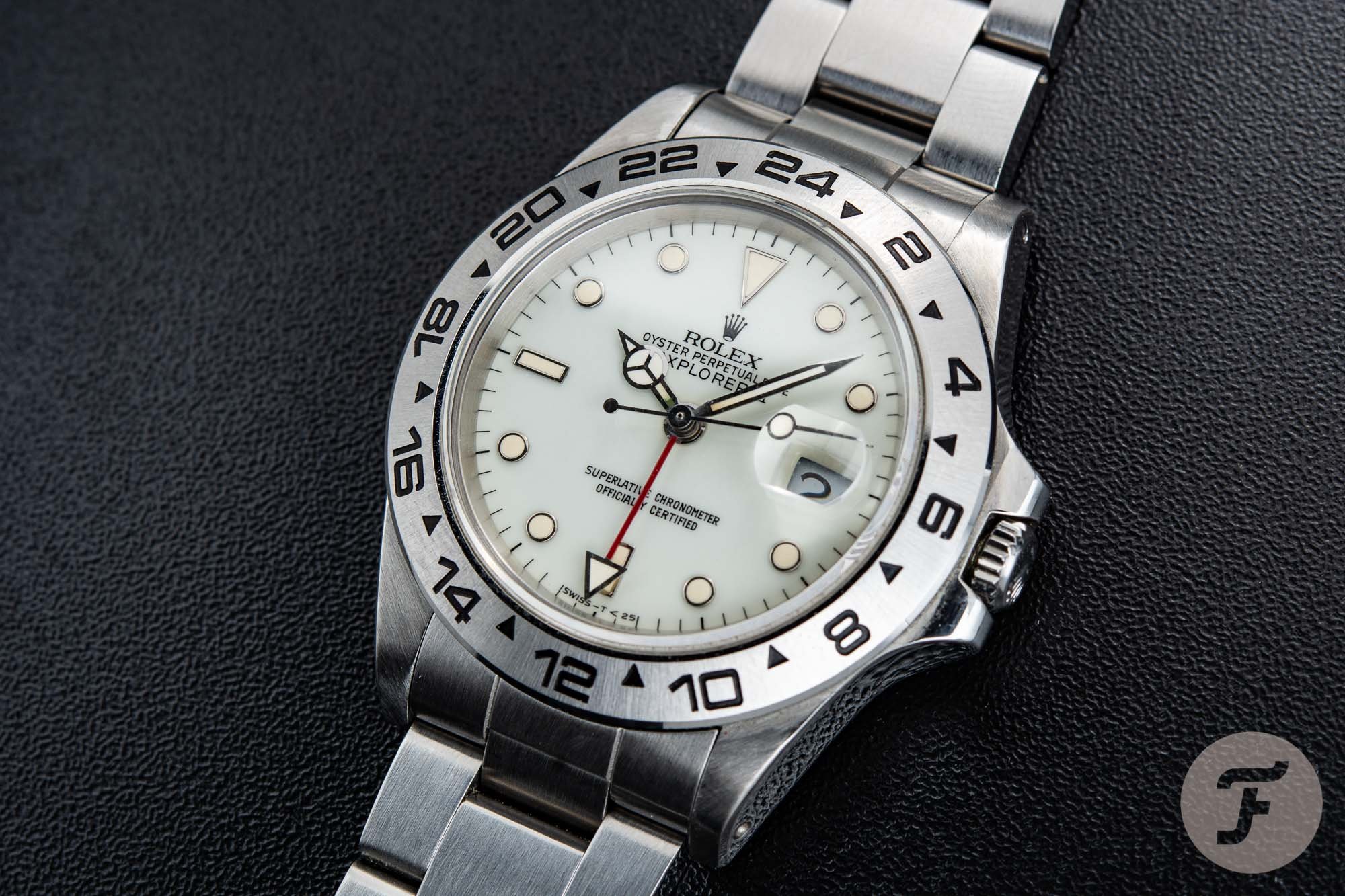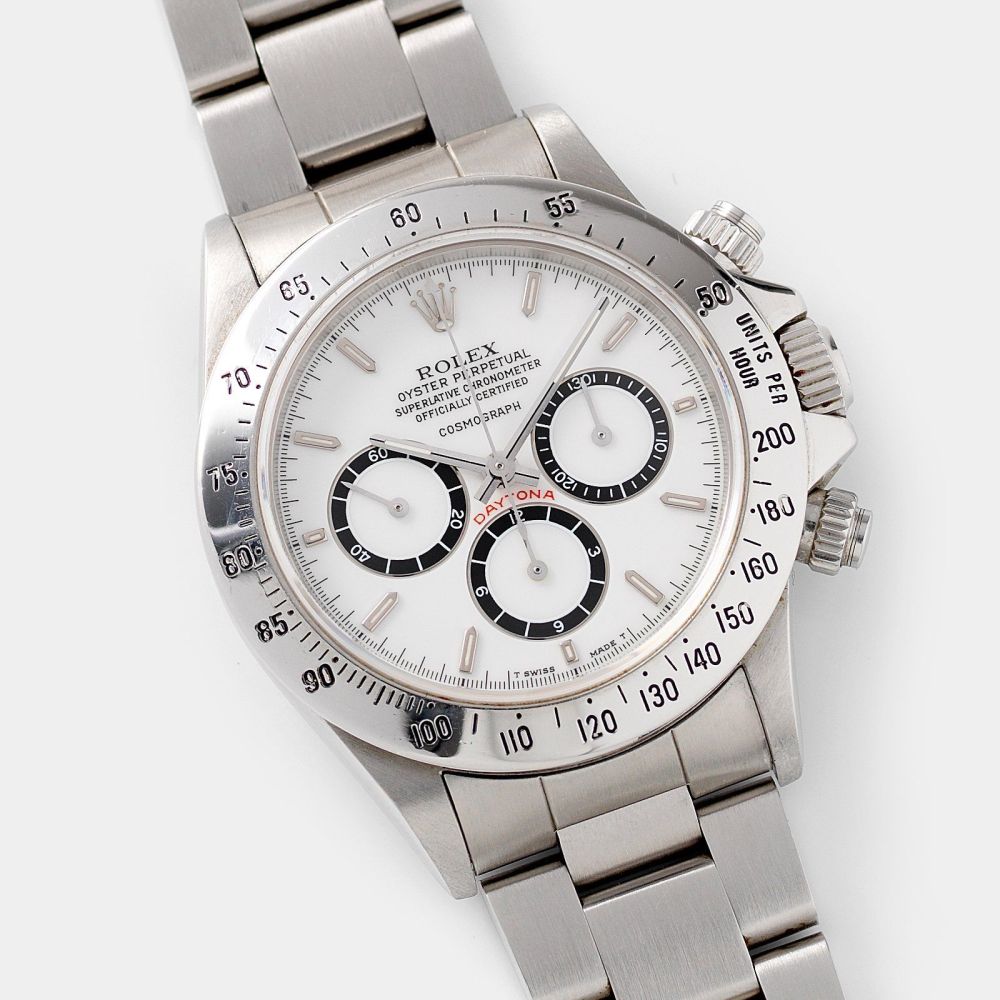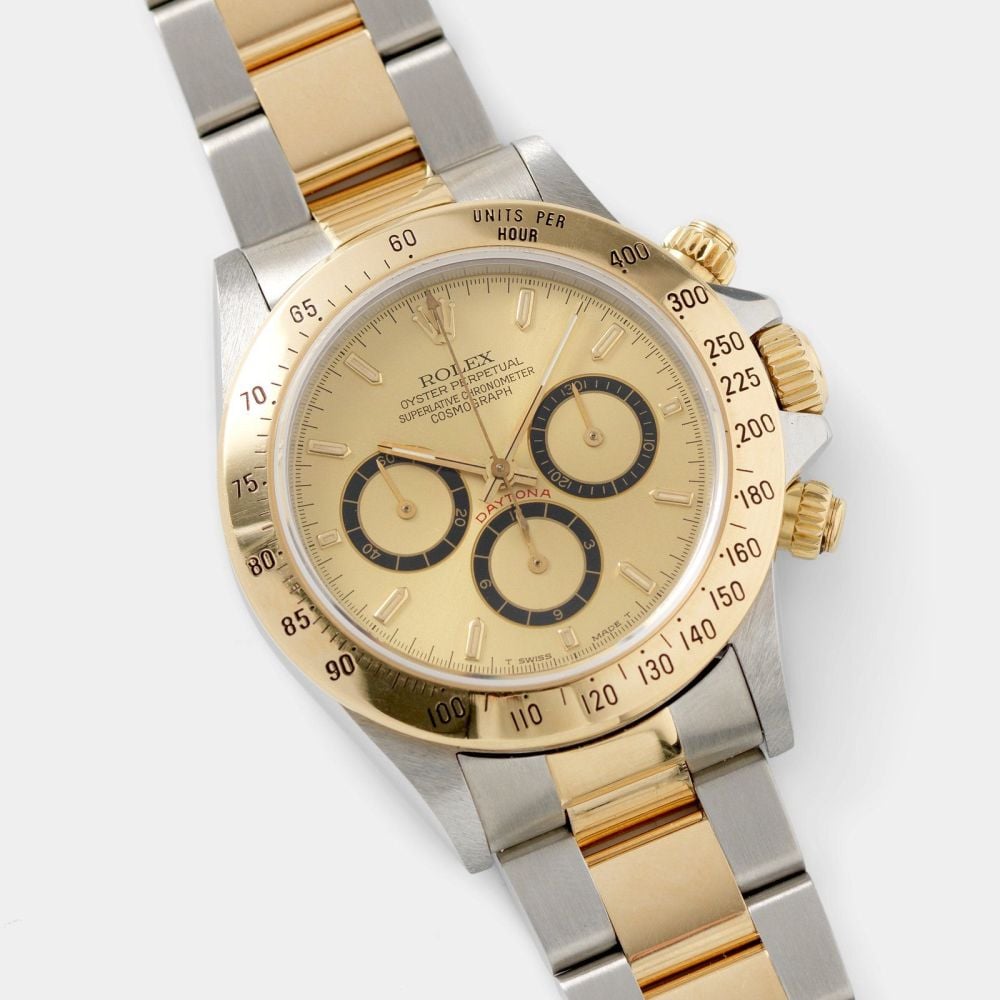A Brief History of Time: Rolex’s Complete Brand History — Part Three: 1961-1988
Welcome back to A Brief History of Time: Rolex’s Complete Brand History. This marks the third installment in our in-depth look at the Geneva watchmaking giant. Today, we’re excited to share the next chapter in its illustrious history.
In Part One, we took a look at the early life of Hans Wilsdorf, his founding of the Rolex brand in 1905, and how his foresight made Rolex an early pioneer in the development of wristwatches. In Part Two, we explored the birth of many of Rolex’s most legendary models. We also saw the brand further its reputation as the top choice of professionals and the powerful. Today, we’ll explore the continual evolution of Rolex’s professional range, and discover how the brand became so much more than perhaps even Hans Wilsdorf had dreamed. I hope you enjoy this next chapter in the history of Rolex.
A good shakeup
After Hans Wilsdorf’s passing in 1960, brand director Rene-Paul Jeanneret had more say in the brand’s direction. In 1962, he and Rolex defied all expectations, introducing a new watch that nobody saw coming. It was reference 9630 — the King Midas. The watch took inspiration from the ancient Greek king of the same name. In Greek mythology, Midas was able to turn anything into gold simply by touching it. And when it came to gold, reference 9630 certainly didn’t disappoint. Each example was handcrafted and weighed between 150 and 200 grams. Despite its mere 5.25mm total thickness, it was the heaviest gold wristwatch in the world at the time. The bracelet featured solid ingot links as thick as the middle case and a unique dual-deployant clasp.
The King Midas used the ultra-thin caliber 650, a manually wound movement developed by Blancpain. As the case was not water-resistant, it featured a push-pull crown, uniquely shaped like a sun. Many examples featured a “King Midas” engraving straddling the crown. Later examples became some of the first Rolex watches with a sapphire crystal. Each individual case had its own engraved number, with a total production of under 800 pieces during its original production run from 1962-1972. My research indicates that the King Midas cost 1.3 to 1.5 times the price of a Day-Date. Thus, it became the brand’s most premium offering. Elvis Presley famously owned and wore a King Midas, given to him in 1970 to commemorate a series of sold-out concerts in Houston.
Rumors and speculation
Due to its uncommon case shape and integrated bracelet, many assume Gérald Genta designed the King Midas. Rolex, however, has never confirmed this, and as far as my research suggests, Genta himself never did either. Many also believe the left-handed crown to be a reference to the King Midas myth. They claim that in the story, “everything Midas touched with his left hand turned to gold”. Of course, different versions of the myth vary in their level of detail. However, I have yet to find any evidence of that claim in any of them. Most interestingly for me, the purpose of the King Midas myth is to teach a moral lesson about the despair that greed can cause. What this meant to Rolex and for the watch itself, though, is perhaps a topic for another day!
The Rolex dress watch
At any rate, the King Midas was a wake-up call for Rolex. Before its release, for better or worse, the brand’s watches had become known for their rugged versatility. Sure, there had always been a sense of elegance and aspiration inherent in Rolex Oyster models. The King Midas, however, as a luxury for luxury’s sake, proved that Rolex could compete in the most affluent realms of horology. When André Heiniger became the new CEO of Rolex in 1963, Jeanneret saw his shared vision and a chance to take Rolex upmarket.
To do this, the brand needed to break the trend of people owning just one Rolex for decades, only to receive a gold one upon retirement. The brand needed people to buy different Rolex watches for different purposes. In Jeanneret’s mind, one way to do this was with luxury dress watches.
In the early 1960s, Rolex introduced the Cellini dress line, inspired by 16th-century Italian goldsmith and sculptor Benvenuto Cellini. The watches carried on the refinement of the Precision line that had been in production for decades. Unlike the Precision line, however, which included some steel dress watches, the Cellini watches were fashioned strictly in yellow and white gold. Many also featured diamond-set bezels and cases. In the 1970s, the King Midas design would actually become a Cellini model as well. The Cellini line, however, lacked focus. The watches varied in shape, size, and style so much, and had no other model names to set them apart. This makes it nearly impossible to pick any particularly important reference from this era. Perhaps it was this lack of focus from the beginning that led to the line’s lackluster reputation.
The next future icon
It’s questionable that the Cellini line accomplished Jeanneret’s goal of creating Rolex collectors, either then or now. Rolex’s next professional release, however, would certainly inspire thousands of future enthusiasts. In 1963, Rolex released the Cosmograph reference 6239, the brand’s first watch designed specifically for endurance race car drivers. It featured a manually wound Rolex 722 (Valjoux 72) chronograph caliber, a tachymeter bezel, black or white dials with contrasting sub-dials, and came in a 37mm non-Oyster case. In very early advertisements, Rolex called this model the “Le Mans.” It appears, however, that the brand never produced dials with this name, and it failed to catch on. But if this watch looks familiar, there’s a good reason for that. Rolex’s new racing chronograph would very soon become known as the “Daytona.”
As with most of the Rolex professional models released in the ’50s and ’60s, the Cosmograph received revisions not long after its debut. By 1965, Rolex released the references 6240 and 6241. The 6240 featured an upgraded Oyster case with a screw-down and patented screw-down pushers, as well as a new black acrylic bezel insert. This is the first reference in which the Daytona name appeared on the dial. Interestingly, however, some dials did not have it. The 6241, a non-Oyster case version of the 6240, was the first Cosmograph to feature the Daytona designation on all dials.
The stuff of legends
Rolex produced these first three Cosmograph/Daytona references concurrently until 1969. Starting in 1965, some of them even featured “exotic” dials. These had an art deco font on the subdials, contrasting chapter ring, and red accents. Exotic dials were the runts of the litter, and they did not sell well for many years. These, days however, it’s a whole different story. Nicknamed “Paul Newman” after the famous actor and race car driver who wore one, these dials are now incredibly desirable among modern-day collectors. Paul Newman’s personal Daytona sold at auction for $17.8 million USD in 2017.
The Sea-Dweller saga
In the 1960s, the US Navy conducted a series of long-term, underwater SeaLab experiments. In these experiments, specialist saturation divers would live and work in a pressurized underwater chamber for weeks a time. They could do this thanks to a helium-based mixture of breathing gas developed in the late 1950s. The newest mixture provided several advantages over prior nitrogen-based breathing gas mixtures. Helium had fewer harmful narcotic effects and could escape from the body tissue much more quickly upon a diver’s ascent. Once their body tissue was saturated with the new gas, specialist US Navy aquanauts were able to stay underwater for extremely long periods of time at greater depths than ever before and spend far less time decompressing upon ascent. Humans could now literally dwell in the sea.
With its established history of underwater exploration, Rolex was obviously very excited about the SeaLab experiments. The brand equipped SeaLab divers with Submariners pressure resistant to 200m. The third SeaLab experiment, however, was to take place at a depth of 183m. Rolex realized the divers might need a more capable watch. Between April and June of 1967, the brand reportedly produced around 40 examples of the very first Sea-Dweller reference 1665. The watch was water-resistant to 500m. This was two and half times more than the concurrent Submariner reference 5512. It featured a single line of red text for the new Sea-Dweller designation as well as the Submariner name. Since aquanauts could now stay underwater for weeks on end, Rolex fitted the Sea-Dweller with a date window to help them keep track of the passing days.
Necessary improvements
Rolex had already begun production of these 500m water-resistant Sea-Dweller cases when it received some critical information from archaeological diver T. Walker Lloyd. In conversations with US Navy aquanaut Bob Barth, Lloyd had learned that saturation divers’ watches were “exploding” upon decompression. This was due to the fact that after weeks underwater, tiny helium molecules would work their way inside the cases. During decompression, the helium could not escape from the watch as quickly as it could from the diver’s body. The resulting pressure would cause the crystal of the watch to blast away from the case. Divers could avoid this by unscrewing their crowns before decompression. If they forgot, however, it could prove detrimental to the watch and dangerous to the diver in the chamber.
Barth had shared with Lloyd his idea for an automatic one-way valve on the side of the case that would allow helium to escape from the watch at a controlled rate. In the water, outside pressure would force the valve closed, keeping it watertight. Once a diver was in the dry decompression chamber, however, the pressure inside the watch would build to a certain level, allowing the tiny helium molecules to push the valve out enough to escape. Lloyd shared this idea with Rolex, and the brand started working away at it, applying for a patent in November of 1967. Grateful to Lloyd for sharing this invaluable information, Rolex ended up hiring him as an oceanographic consultant. Many of the valveless Sea-Dweller cases that Rolex had already produced would end up being retrofitted with the valve a few years later.
Setbacks and eventual release
Over the next few years, Rolex faced setbacks in the release of the Sea-Dweller. The SeaLab 3 experiment was postponed several times due to a lack of Navy funding. When it eventually took place in 1969, Rolex equipped the aquanauts with the new Sea Dwellers with helium escape valves. Unfortunately, an accident caused the death of one of the divers, and the experiment was aborted. Rolex therefore provided prototypes of the Sea-Dweller both with and without helium escape valves to several other divers and researchers for testing, such as those in the 1969 Tektite experiment and researcher Dr. Ralph Brauer. Brauer’s correspondence with Rolex about his intent to use a hydrogen-based breathing gas instead of helium caused the brand to rename its innovation the Gas Escape Valve, rather than specifying helium.
Hearing news that Omega was working with COMEX to develop a 600m pressure-resistant watch, Rolex upgraded the cases of the Sea-Dweller from 500m of water/pressure resistance to 610m (2000 feet.). Interestingly, the watch maintained the same 1665 reference number as its predecessor. These models featured two lines of red text, reading “Sea-Dweller/Submariner 2000.” In 1970, the patent for Rolex’s Gas Escape Valve was finally granted over two years after Rolex had filed for it. Despite having technically been in production for years already, the Sea-Dweller saw its official public release in 1971. These models are now known by collectors as the “Double Red Sea-Dweller,” and Rolex produced them until 1977.
The Submariner gets an upgrade
Backtracking slightly to 1969, Rolex introduced the first regular Submariner with a date. This new Submariner reference 1680 featured the chronometer-certified caliber 1570. Released 16 years after the first Submariner, it marked a turning point for the line. Though the original Submariner had been designed as a diver’s tool, it was also intended to be elegant enough to wear every day. As the date complication with Rolex’s signature Cyclops magnifier was a great everyday convenience, the addition of a date complication was likely a logical evolution. The watch featured the same overall styling as concurrent dateless Submariner references. “Submariner”, however, was written in red, leading modern-day collectors to call this model the “Red Sub.” The water resistance rating on the first three iterations of the 1680 dial also indicated meters first. This is a tiny detail that collectors go crazy for.
By 1969, Rolex certainly noticed that not everyone who owned a Submariner was a diver. Though it had obviously not betrayed its “tool watch” heritage completely, under CEO André Heiniger, Rolex was successfully making an intentional transition into the luxury market. Therefore, alongside the steel Submariner 1680, the brand released the first-ever Submariner in full 18k gold, reference 1680/8. Much like the gold GMT-Masters of the time, the new gold Submariner featured a “nipple dial” with gold applied indices and little luminescence. The first models with a black dial featured a black bezel insert with champagne-colored printing and a champagne-colored date wheel. For the first time in the Submariner line, the heavy gold Oyster bracelet even had polished center links. Some enthusiasts believe that this model marked the transition of the Submariner from a tool watch to a luxury status symbol.
The first quartz Rolex
In 1970, however, Rolex released a totally new luxury status symbol — its first-ever quartz watch, reference 5100. Known simply as the Rolex Quartz, this watch used the cutting-edge Beta 21 Swiss quartz movement. This caliber was the result of seven years of total development by the Centre Electronique Horologer, a consortium of 21 of the biggest players in the Swiss watch industry. Developed to compete with the impending wave of quartz movements on the horizon from Seiko, the movement was actually quite remarkable. It was accurate to ±5 seconds per month and required no regular maintenance. It even had a sweeping seconds hand and a new quick-set date function. A total of 16 watch brands would use this caliber, including Patek Philippe, Audemars Piguet, and IWC.
When it came to styling, the Rolex Quartz was “the future” incarnate. Though the dial, fluted bezel, and Cyclops magnifier were reminiscent of the Datejust, the 40mm slab-sided case was massive for the time. The solid 18k gold integrated bracelet was unlike any other in the Rolex catalog, complete with chunky, faceted links. In total, the watch weighed around 240g, and it was the most expensive model in the Rolex catalog. Unofficially dubbed “The Texan” due to its massive size, weight, and price tag, the Rolex Quartz was also the first model in the Rolex lineup produced exclusively with a sapphire crystal. It was also the first Rolex with a quick-set date.
An elite club
Before putting it into production, Rolex offered 1000 examples of the Quartz for pre-order to its wealthy clientele. All 1,000 pieces sold out. Rolex would go on to produce a vast majority (some estimates say upwards of 800) in yellow gold, with a tiny minority in white gold. Each case was individually numbered, and Rolex made no small deal of the watch’s exclusivity. Rolex promotional materials at the time invited owners of the Quartz to visit its Geneva headquarters at any time and add their names to its “Golden Register, a Who’s Who of our clients who proudly count a Rolex Quartz among their most precious possessions.” The brand referred to these top clients as “the Rolex Quartz Club, one of the most exclusive clubs imaginable.” Clearly, the brand was no longer just a humble tool watch manufacturer.
The Rolex Quartz reference 5100 was produced until 1972. Case numbers over 1000 have been found, but exactly how many examples of this exclusive watch were produced in total remains up to speculation. It has also been said that despite its initial 1000 pre-orders having sold out, overall, the reference 5100 was a commercial failure. Perhaps Rolex found it hard to sell any more than those initial 1000 pieces. Rolex has stayed decidedly silent on these matters. Regardless, when production of Quartz 5100 ended, Rolex abandoned the use of the Beta 21 caliber to pursue its more exclusive in-house quartz technology.
The caver’s watch
In 1971, Rolex introduced a new take on its adventurer’s watch with the Explorer II. The watch was designed for recreational spelunkers and scientific researchers who would stay in caves without sunlight for days on end. Their dark environments required a rugged watch capable of distinguishing between night and day. Distinctly different from the Explorer, the new reference 1655 Explorer II had a 39mm case, a fixed stainless steel 24-hour bezel, and the caliber 1575 GMT. This movement was an iteration of the three-hand/date caliber 1575, modified to include a 24-hour hand. But despite sharing an additional hand, the Explorer II was also quite different from the GMT-Master.
At the time, both watches lacked an adjustable 24-hour hand. In fact, the GMT-Master relied on its rotating bezel to display two time zones. With a fixed bezel, the Explorer II couldn’t display two time zones. Rather, it displayed one time zone in both a 12-hour and 24-hour format. The bezel had its advantages though, as it was unlikely to pop off upon collision with a rock. The black dial of the Explorer II was also unique, as all of its painted indices with the exception of the triangle at 12 o’clock were rectangular. The 24-hour hand was big, bold, and orange. This hand and the straight, white hour and minute hands had black bases and appeared to float over the dial. This watch was important, as it would be the last completely new professional model that Rolex would add to its lineup for over two decades.
Evolution of the Submariner
In 1971, the gold Submariner-Date reference 1680/8 received a blue dial and blue bezel insert for the first time ever, distinguishing it even further from its steel counterpart. The dials were a beautiful sunburst blue, which offered a much richer look than the matte black dials of the other gold variants. Around this time, Rolex also introduced the Triplock crown, which featured an additional third gasket for better protection against water. Despite upgrading the crowns on the Submariners of the time, the watch would remain officially water-resistant to 200m.
Rolex-COMEX
1971 also saw the beginning of Rolex’s official partnership with the famed commercial diving company COMEX. The company had previously worked exclusively with Omega, but when Rolex CEO André Heiniger offered COMEX 100 free dive watches to be labeled Rolex-COMEX, the company couldn’t say no. The association was greatly beneficial for both entities. For Rolex, the ability to freely use the COMEX name in its advertising added legitimacy to its reputation. Additionally, the data and feedback received from COMEX divers helped Rolex build a better watch. For COMEX, the free watches and association with “The Crown” were obviously amazing perks. Rolex initially provided COMEX divers with Sea-Dwellers, but as many of them worked at depths above 200m, the brand produced a special Submariner reference 5513 with a Gas Escape Valve as a more cost-effective solution.
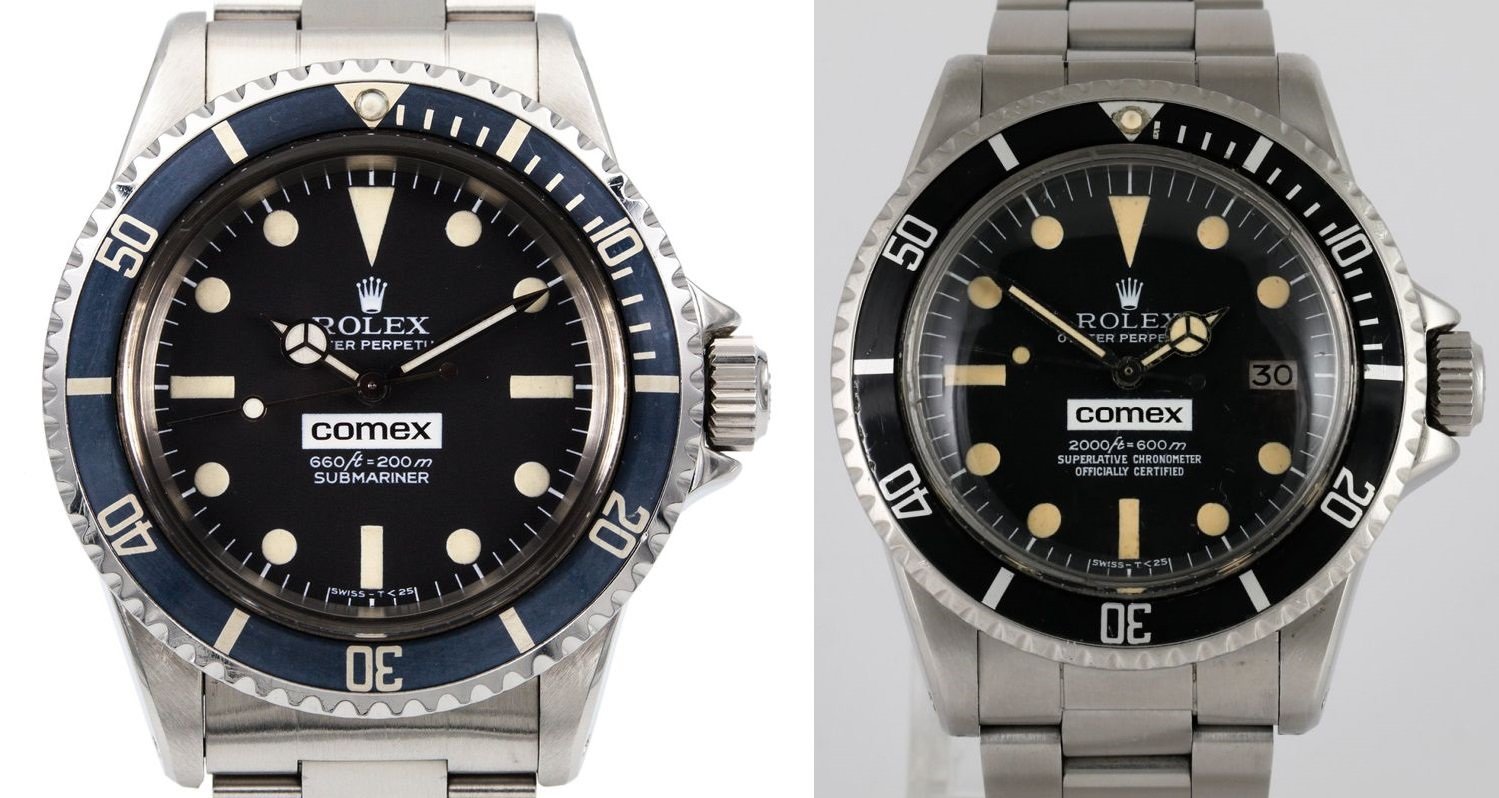
Submariner reference 5514 (credit: HQmilton.com) and special Sea-Dweller reference 1665 (credit: Rolexpassionmarket.com)
The first Sea-Dwellers and 5513 Submariners were labeled with the COMEX name on the case back. In 1977, however, Rolex would produce the first watches with the COMEX logo on the dial. The special Submariner 5513 received its own reference 5514. Like the previous 5513, this watch was not chronometer-certified and featured the Rolex caliber 1520 and a Gas Escape Valve. The COMEX-dial Sea-Dweller, however, shared the same 1665 reference number as its non-COMEX counterpart and housed the chronometer-certified caliber 1575. These watches were never available to the public. Rolex watches would accompany COMEX divers on some of the coolest diving adventures over the following decades.
The Mil-Sub
In 1971, Rolex began issuing a modified Submariner reference 5513 to the British Ministry of Defense. Though Rolex had made an extremely limited run of modified Submariners (reference A/6538) for the MoD, in the late ’50s and ’60s, the newer “Mil-Sub” is the version most commonly known among enthusiasts today. Distinguished by its welded strap bars, sword hands, fully graduated timing bezel, and T logo indicating tritium luminescence, the watch also featured some unique engravings on the back. Watches engraved with “0552” were designated for the MoD’s elite Special Boat Service. “923-7697” was the NATO code for watches to be used in water. The Broad Arrow logo in the center meant it was a piece officially issued to/by the British military. Finally, the last two numbers, separated by a slash, referred to the individual soldier and the year the watch was issued.
Rolex would produce the “Mil-Sub” in three references throughout the 1970s. Among references 5513, 5513/5517, and finally 5517, there were an estimated 1,200 total units issued. Today, these are among the most collectible and expensive Submariners in the world.
Eyes to the future
By 1975, Rolex had produced a new case and bracelet for its upcoming quartz watch with an in-house movement. There was only a slight problem — the movement itself wasn’t ready yet. To “test drive” the new case, Rolex fitted it with the mechanical automatic caliber 1570 and released two references, the Oyster Perpetual Date 1530 and Datejust 1630. The Oyster Perpetual Date 1530 was available only in steel with a smooth bezel and brushed Oyster-style bracelet. The Datejust 1630 was available in two-tone steel and yellow gold with a fluted bezel and Jubilee-style bracelet. The case, with its integrated bracelet and non-traditional shape, definitely took inspiration from “The Texan” of 1970. At just 12mm thick and only 36mm in diameter, however, it was definitely more refined. It is estimated that Rolex produced less than 1,500 examples of these watches.
The most accurate Rolex ever
Finally, in 1977, the new quartz movement was ready, and the OysterQuartz blasted onto the market. Available in both Datejust and Day-Date formats with a variety of metal, dial, and bracelet options, these new watches featured the 11-jewel calibers 5035 and 5055 respectively. The new quartz movements were the finest available. Despite being powered by an electronic pulse motor and regulated by a quartz crystal, they were actually based on Rolex’s latest mechanical caliber, the 3035. In fact, the bridge, plate, and pallet designs were nearly identical. The OysterQuartz blew the Beta 21 caliber out of the water in the tech department. The oscillator in the OysterQuartz ran four times faster than that in the Beta 21, and an ambient temperature sensor made automatic adjustments to the rate of the oscillator for accuracy in any temperature. The movement was even finely decorated with bevelling and Geneva stripes.
Eighteen months after the initial release, Rolex updated the crystals in the OysterQuartz calibers to a tuning fork shape and submitted them to the COSC for chronometer certification. They were able to meet the new standards for quartz chronometers, with a minimum accuracy of ±0.2 seconds per day, and a rumored accuracy of ±50 seconds per year. To this day, the OysterQuartz calibers 5035 and 5055 maintain a reputation as some of the finest quartz movements ever produced. In 1978, an OysterQuartz even graced the wrist of Reinhold Messner, as he and his climbing partner Peter Habeler became the first men ever to summit Mt. Everest without supplemental oxygen. The OysterQuartz would be produced for 25 years, with only around 25,000 examples made across all reference numbers.
Keeping the collection up-to-date
As should be apparent by now, Rolex’s professional models were constantly undergoing a process of gradual evolution. The late ’70s and early ’80s saw several of these across the range, starting in 1978. That year, Rolex literally doubled the pressure resistance of the Sea-Dweller to 1,220m/4000ft in the reference 16660. The newer Sea-Dweller was equipped with a larger Gas Escape Valve, a thicker case, a Triplock crown, a sapphire crystal. The watch also housed the new caliber 3035, with a 28,800vph frequency (up from 19,800vph in the previous caliber 1575) and a new quick-set date. The following year, Rolex released an updated Submariner Date, reference 16800, with a sapphire crystal and caliber 3035. This was the first Submariner ever with a water-resistance rating of 300m, which the model holds to this day.
Versions of both these watches from the late ’70s featured matte dials with painted indices and bi-directional friction bezels. By the early ’80s, however, both had received even further updates, with glossy dials, indices with white gold surrounds, and, finally, uni-directional ratcheting bezels. It’s hard to believe that the Submariner existed for nearly 30 years with a friction bezel, isn’t it? In 1984, the first-ever two-tone Submariner, reference 16803, made its debut. This Submariner date was available with a black dial as well as a blue dial, which was previously offered only on the solid gold model.
GMTs get love too
But Rolex’s dive watches weren’t the only professional watches getting some TLC. In 1980, the GMT-Master saw its first new reference numbers in over two decades, in the steel reference 16750 and gold reference 16758. Both of these watches featured an upgraded movement 3075, with a higher 28,800vph frequency and quick-set date, and a doubled water-resistance rating of 100m. As with the latest Sea-Dweller and Submariner Date, the GMT-Masters also received the glossy dial treatment a few years into their run, with the 16750 also getting white gold surrounds on its indices.
The most significant update to the GMT-Master line, however, came in 1983. That year, Rolex introduced the GMT-Master II, reference 16760. This model was the first Rolex ever to feature the caliber 3085 with an independently adjustable hour hand. For the first time in GMT-Master history, the hour hand was able to make one-hour jumps, allowing not only for easier time zone adjustment but even the possibility of displaying three time zones if used with the bezel. Due to the height of the new caliber, the case of the GMT-Master II was thicker than previous models, leading collectors to dub it the “Fat Lady.” The 16760 GMT-Master II was also the very first in the GMT family to feature the black/red “Coke” bezel. Rolex would produce the GMT-Master and GMT-Master II concurrently for years to come.
No 24-hour model left behind
In 1985, the Explorer II received a huge revision. The new reference 16550 got a dial that was nearly identical to a concurrent Submariner, Sea-Dweller, or GMT-Master II, glossy black with white gold surrounds on circular indices. Rolex replaced the “floating” straight hour and minutes hands of the past with standard Mercedes hands. The former bold orange 24-hour gave way to the same red 24-hour hand from the GMT-Master line. The fixed bezel got a new font for even numerals and triangles instead of hash marks to represent the odd numbers. The new 40mm case featured 100m of water resistance. Most importantly, reference 16550 was the first Explorer II to also feature a white “Polar” dial. It had the exact same white gold indices as the black dial variant. Little did Rolex know that over time, this white paint would change to a cream color, becoming extremely desirable.
The revamped Daytona
The year 1988, also saw the first big revision of the Daytona in 16 years. The new Daytona reference 16520 featured a new 40mm case, 3mm larger than the previous Daytona, with an upgraded water-resistance of 100m and a new sapphire crystal. The engraved bezel was much wider than those on previous models. The black or white dials on the new reference were now glossy and featured sub-dials in the same color with contrasting rings surrounding them. The Valjoux 72-based manually wound caliber of the past was replaced with the Zenith El Primero-based automatic caliber 4030. This movement used only 50% of the original Zenith El Primero parts and tuned its original 36,000vph frequency down to 28,800vph to allow for longer service intervals.
The new Daytona would see releases in all stainless steel, two-tone (reference 16523), and 18k gold (reference 16528) with white, black, and champagne dials. With this new Daytona, Rolex began to realize the power of limited production. The brand would intentionally produce fewer than the market desired, giving the Daytona, especially in steel, a completely new air of desirability. This Daytona, collectors say, was indeed the model that started a phenomenon with which we are all too familiar these days — the Rolex waiting list.
And so I leave you
In the years between 1961 and 1988, Rolex introduced some of the most desirable models on the vintage market today. To be honest, who could imagine a watch world without the Daytona? Perhaps even more importantly, while not totally betraying its utilitarian roots, Rolex fully embraced its potential as a luxury powerhouse. This shift in attitude makes the brand what it is today.
If you’ve stuck with me this long, please know that I greatly appreciate your time and interest. While I fully intended to make this article the final part in our history of Rolex, the task soon ballooned out of proportion, and here we are. Indeed, the pressure of writing the history of the brand with the watch world’s largest group of superfans is no laughing matter. If you find any errors, please let me know in the comments below, and trust that they were not made intentionally.
Join us back here in two weeks for the final part (I promise) in our history of Rolex. Now, to find a safe place to hide before Rob and Nacho wring my neck for the length of this article!

